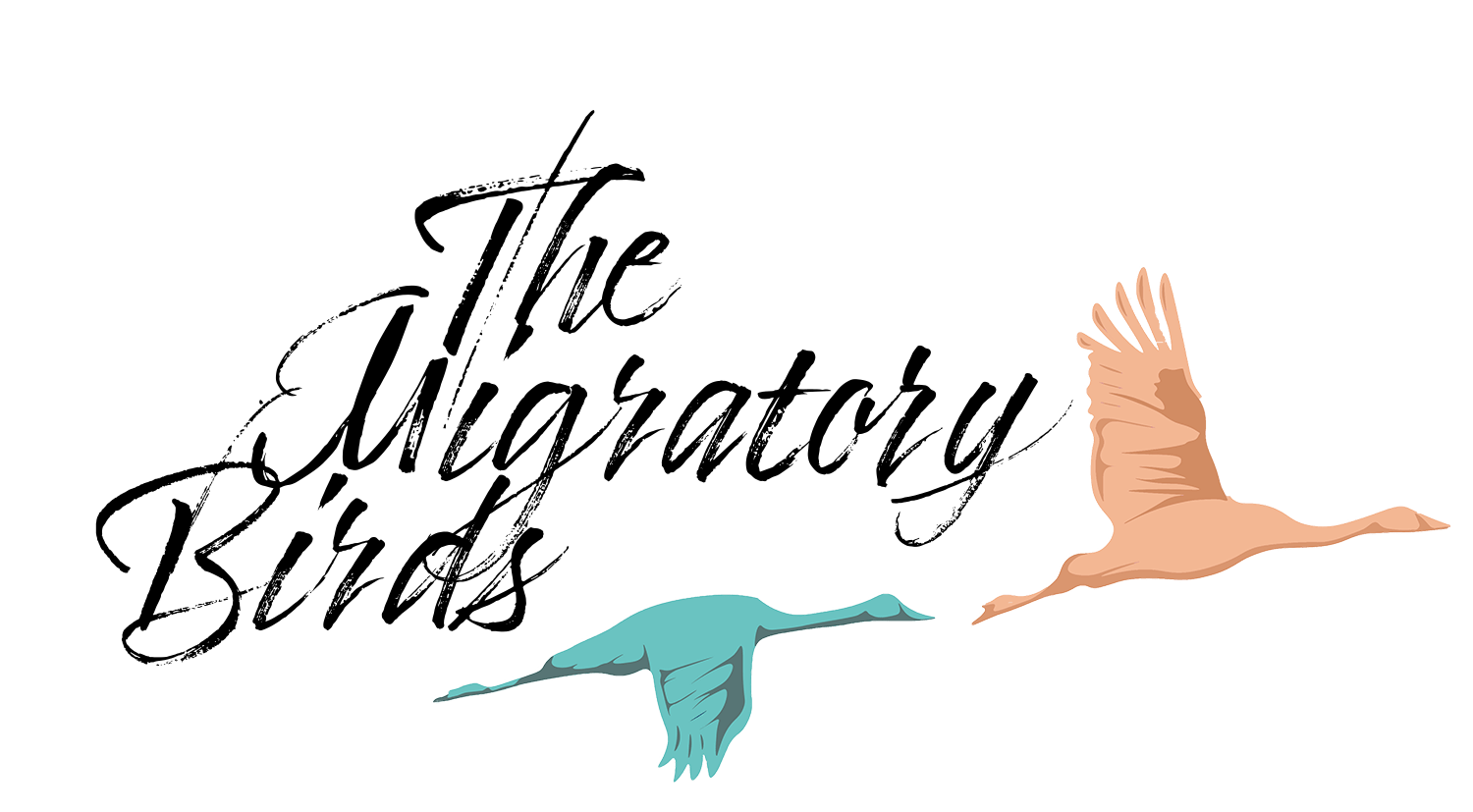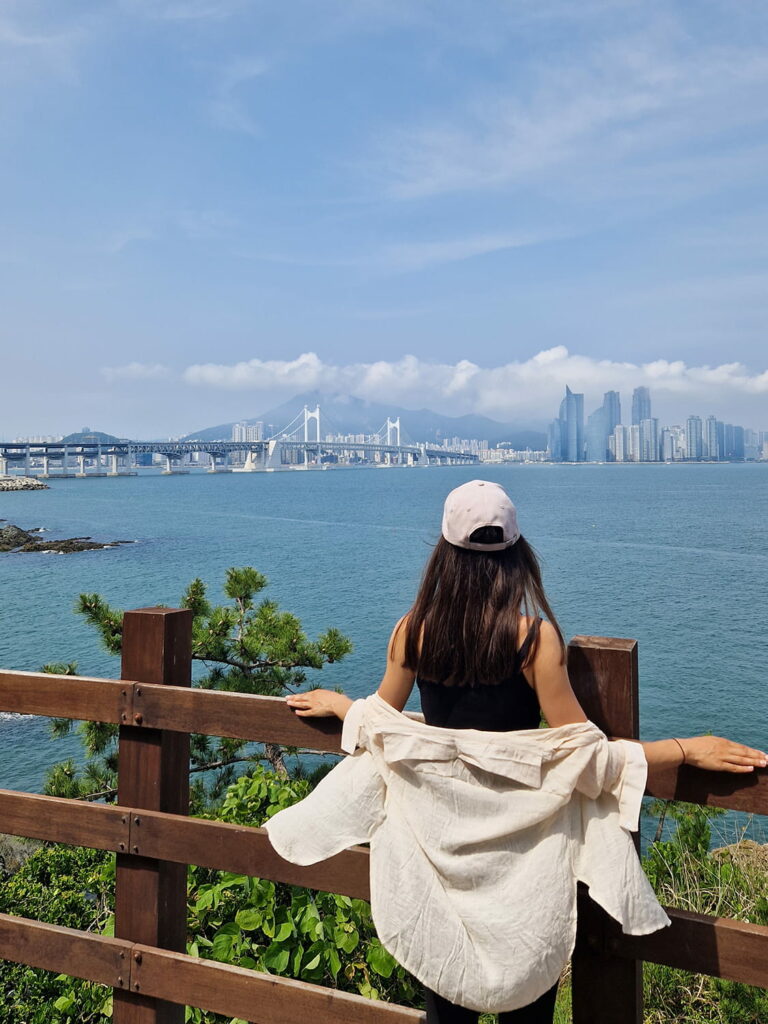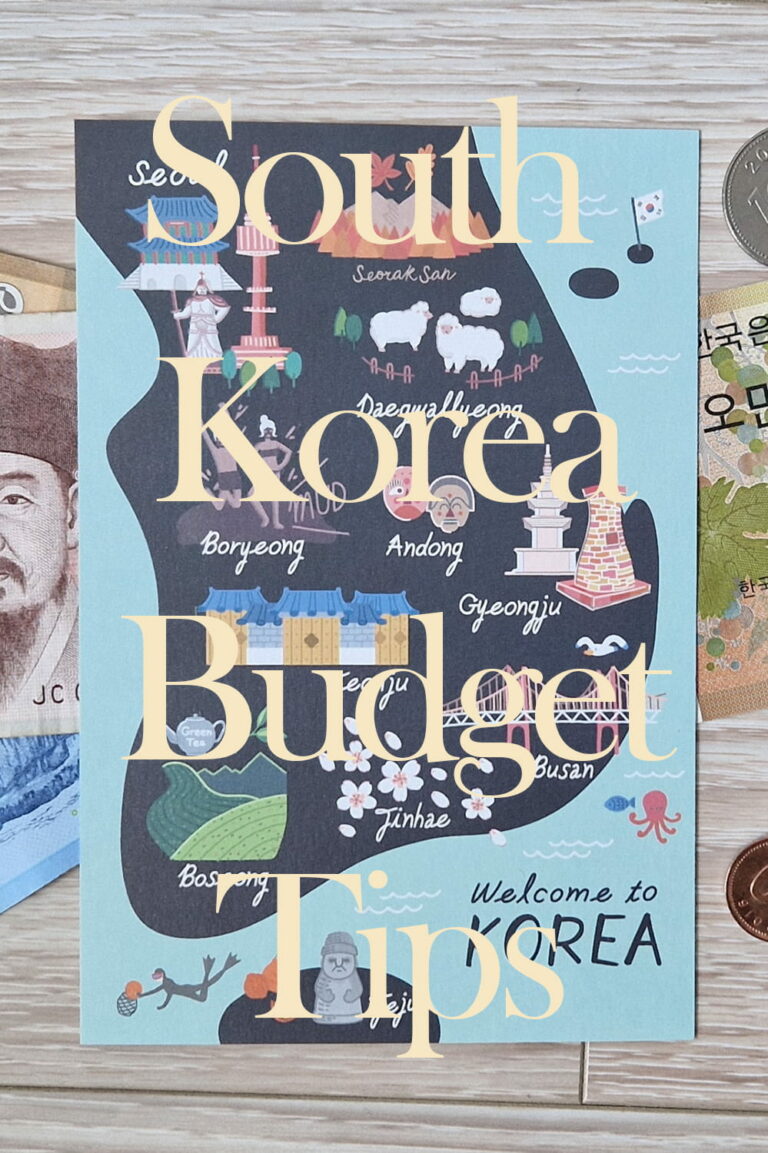How to spend 3-4 epic days in Busan – Ultimate Busan Itinerary
In this ultimate Busan travel guide, we want to show you just how awesome this city is and how you can spend amazing 3-4 days in Busan with our epic itinerary! Find out what to see and do, where to eat, where to stay, how you can save money on attractions and so much more!
Busan is one of South Korea’s MUST-VISIT cities and honestly, we even dare to say that Busan was our favorite city in all of South Korea. This is of course highly subjective…
…but, if like us, you love a beautiful coastal city that combines all the advantages of city life with awesome views, being close to nature and a relaxed coastal vibe – you too will love Busan.
Note: We use affiliate links in this post. They are marked by an *, so you can recognize them in advance. By interacting with these links, you can support us and our website at no extra cost to you! For more information, read our Disclaimer.
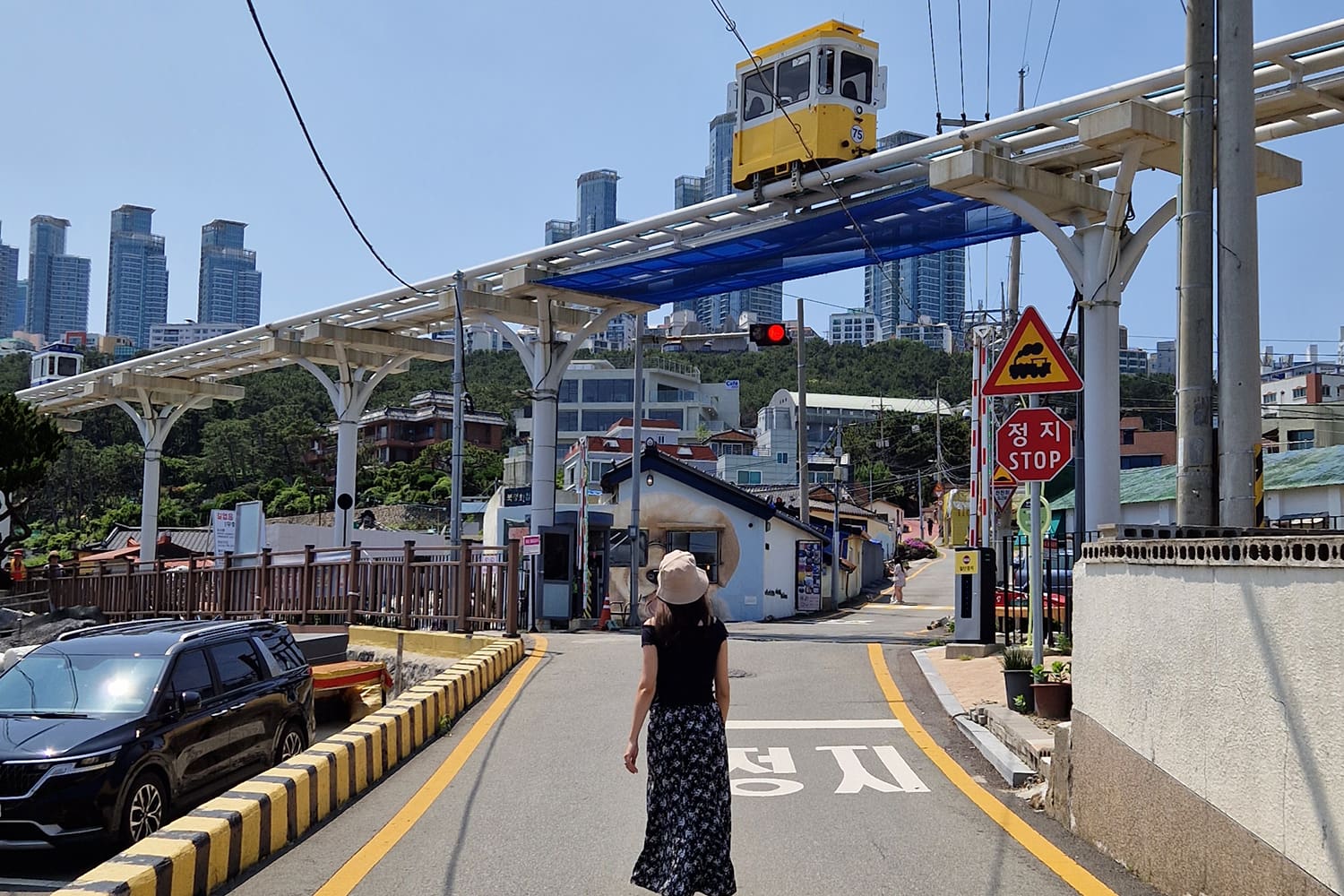
Ultimate Busan Itinerary – How to spend 3-4 magical days in Busan!
We loved Busan so much, that we ended up extending our stay for about two weeks. Lucky for you, that means that we gained a lot of insider knowledge! And we are going to share it with you in this ultimate 3-4 day Busan itinerary!
The following itinerary is moderately paced. That has the advantage that it will give you some time to go and explore on your own terms. Because, that is the beauty of travel! Randomly deciding to explore a side street, stop to talk to someone or head for a café or shop that peaked your interest without having to always go, go, go to the next spot.
We also aim to give a few alternatives where possible. Because let’s be real, we are not all into the same stuff and that is okay! So, let’s get into it!
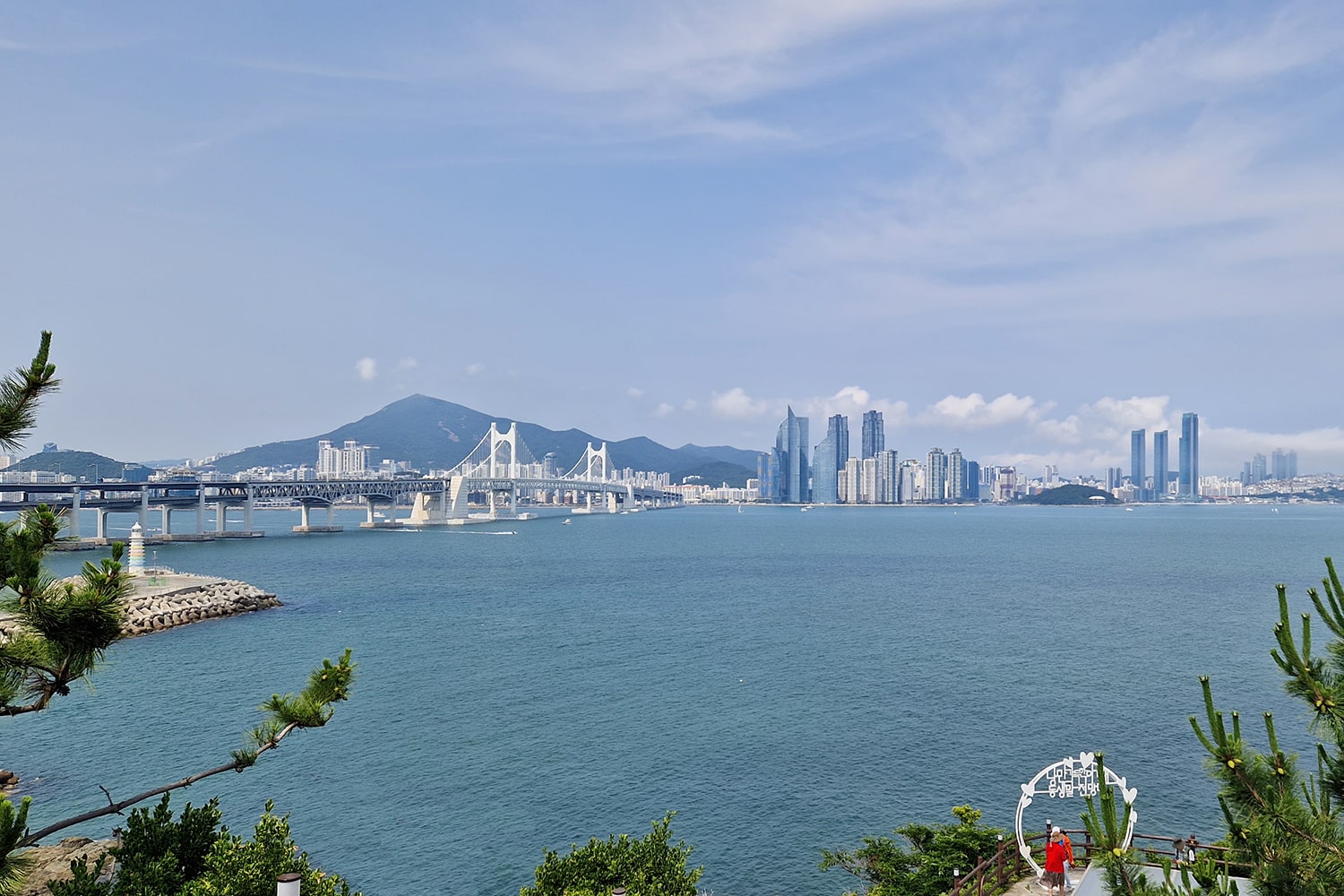
What you should know before you go
Before we get into the itinerary itself, it might be a good idea to first discuss a few things which will determine the framework of your trip to Busan.
And by that we mean, how much time you should plan for visiting Busan, what is the best way to get there and a few other bits and pieces you should account for before you go!
How many days do you need to visit Busan?
Since Busan is the second largest city in South Korea, it is definitely not a city you can visit in just a day. The city is stretched quite wide alongside the coast with a mountainous terrain as its backdrop.
Due to that particular layout traveling from the cities’ west side to its east side can take up to an hour depending on your start and end point!
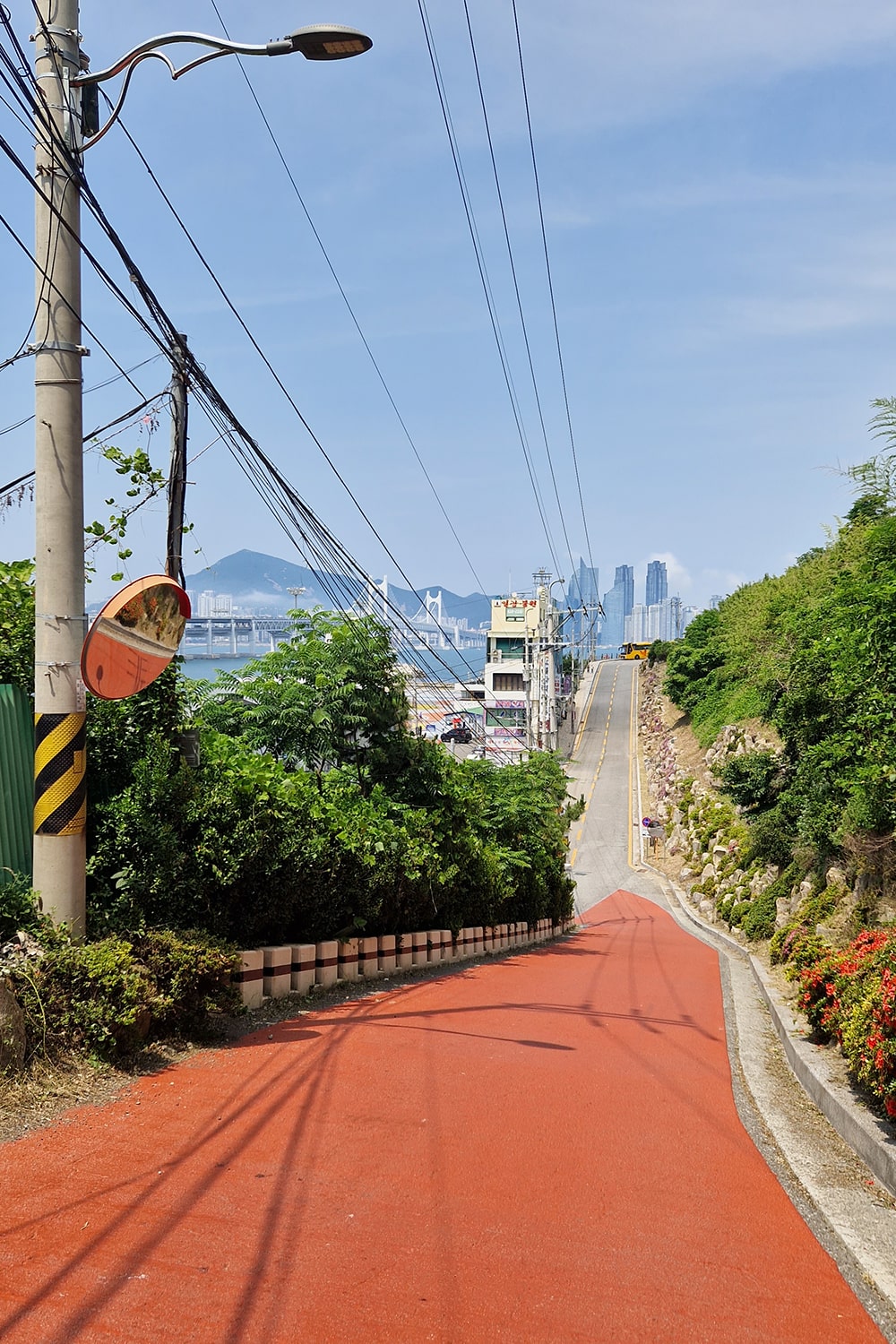
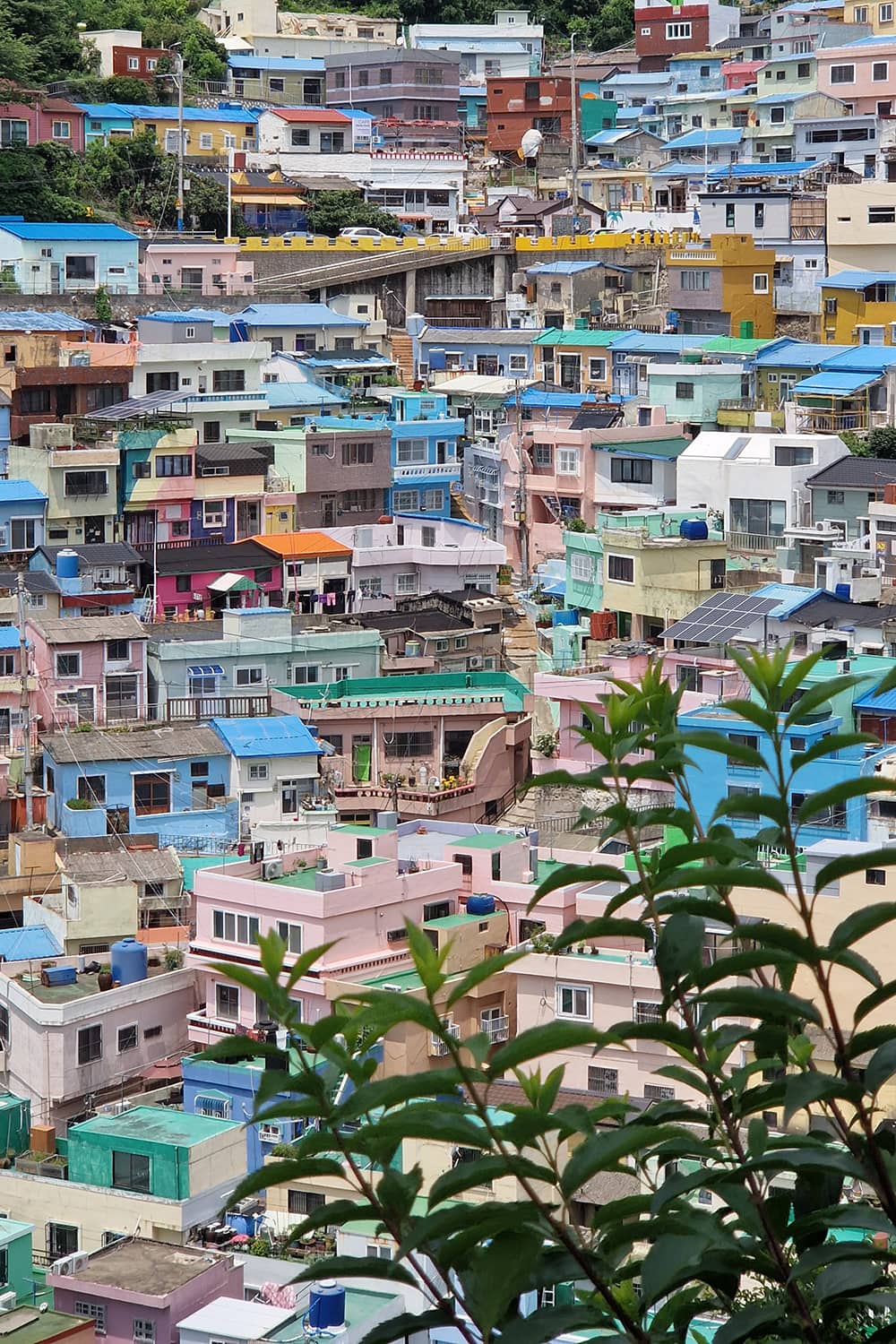
Therefore we would suggest that you spend at the very least two full days in Busan. However, you will have to prioritize certain areas of Busan over others in that case. Otherwise you will rush from place to place all day long. If you really do not have more time to spare, your best bet might be to book a day tour for some of the more remote attractions.
Ideally though you plan to spend 3-4 days in Busan. That way you can really get to know the city and experience all the various facets Busan has to offer. And, in this itinerary we will show you exactly how you can do just that!
How to get to Busan?
Since Busan is such a big and popular city in South Korea, there are a great number of possibilities on how you can get to Busan. In this section we will give you a quick overview over the most prominent ones.
- If you travel to Busan from one of the closer by countries (i.e. Japan, China, Vietnam etc.) there are a number of direct flight connections to Busan, a lot of them with fairly cheap budget airlines as well.
Check flights to Busan*:
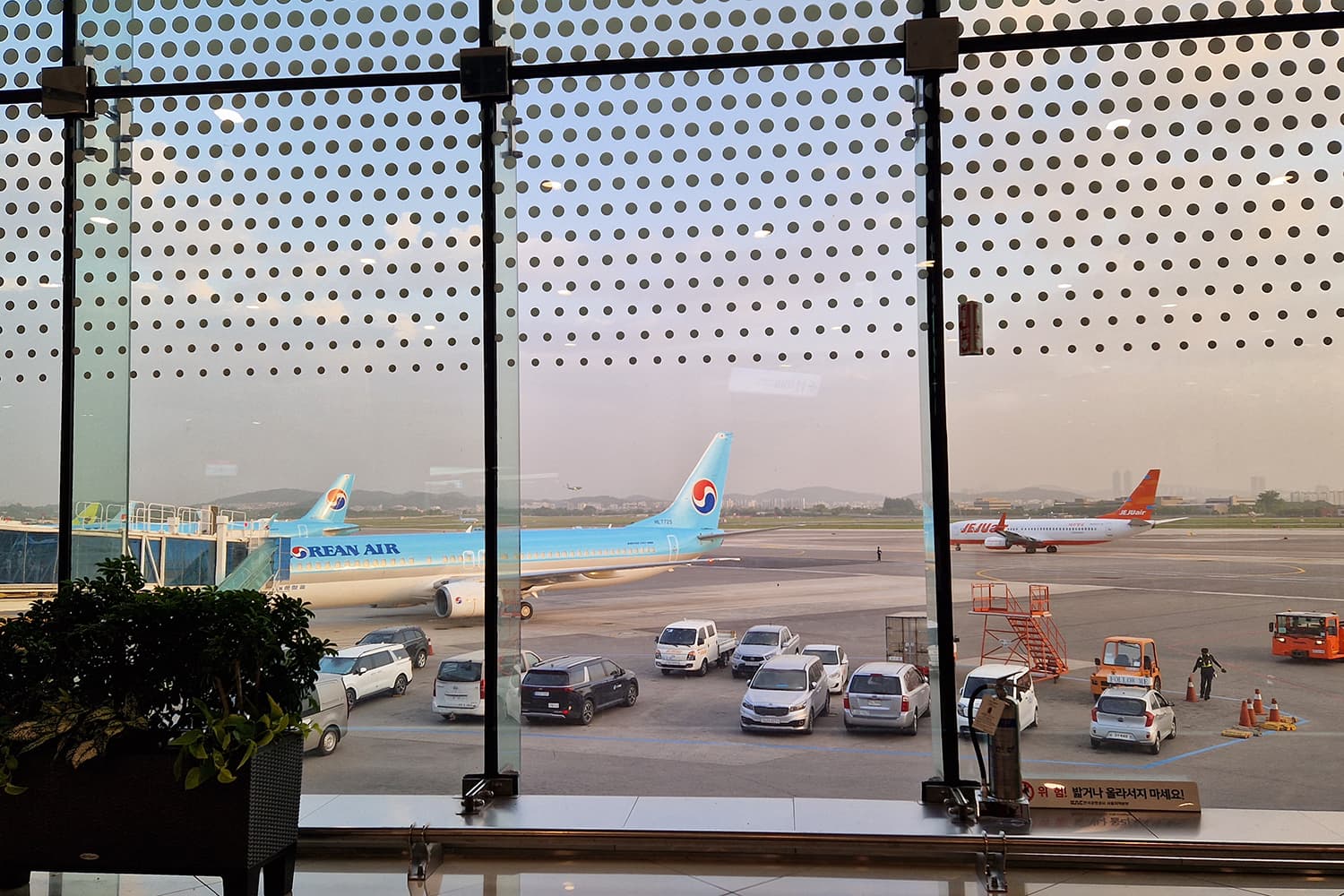
- If you plan on visiting Busan from Japan specifically, there is a direct ferry connection between Fukuoka, Japan and Busan, South Korea you might want to look into.
🛥️ Queen Beetle Ferry*: Travels from Fukuoka to Busan and vice-versa in about 3h40min leaving Fukuoka at 9 a.m.! Price: 16.000¥ (~98€) per person. On Klook you can find cheaper tickets depending on your travel dates.
- If you travel to Busan from further away overseas, chances are you go to Busan as part of a whole South Korea trip, which probably means that you fly in via Seoul and travel to Busan from within South Korea.
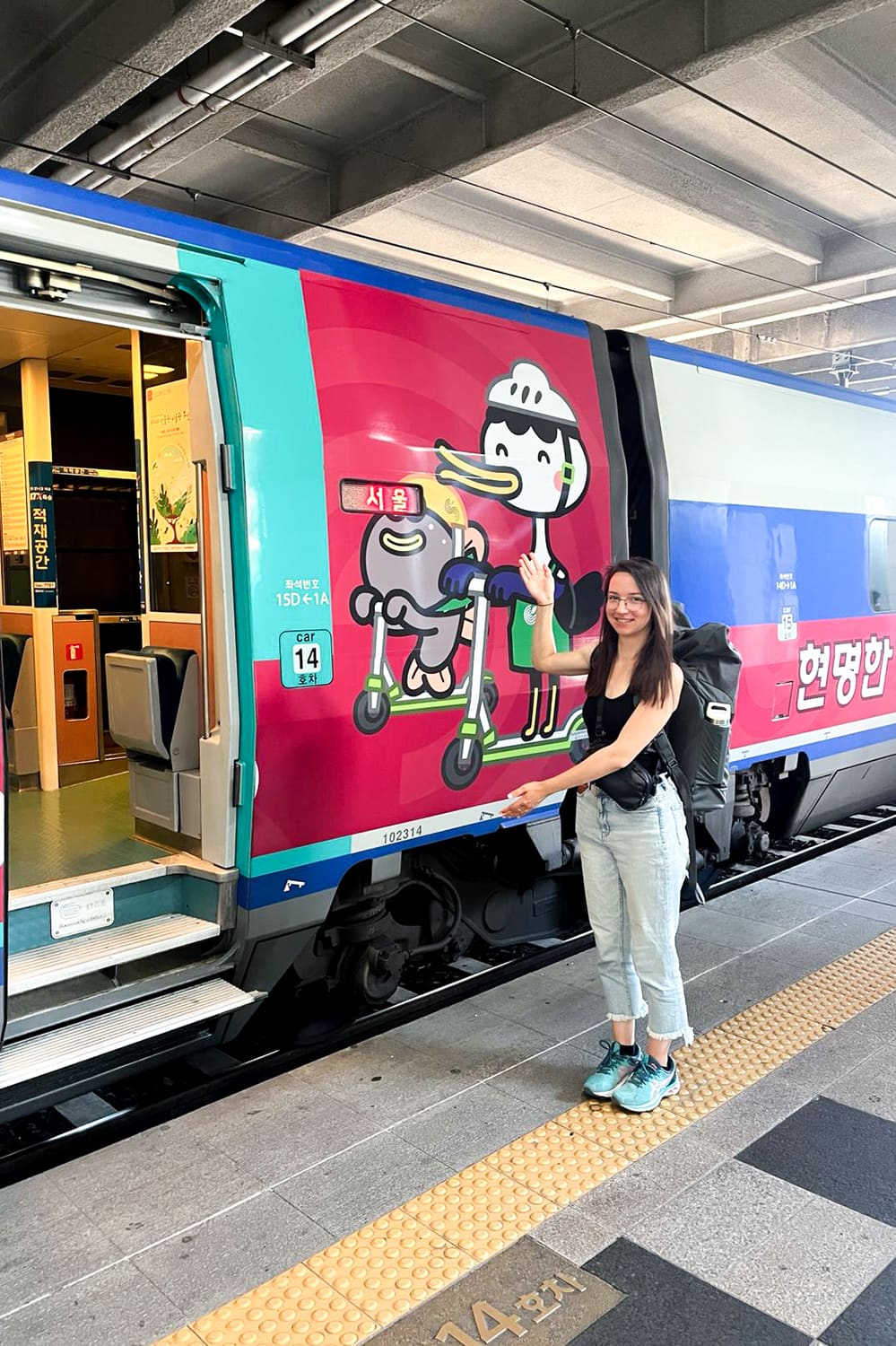
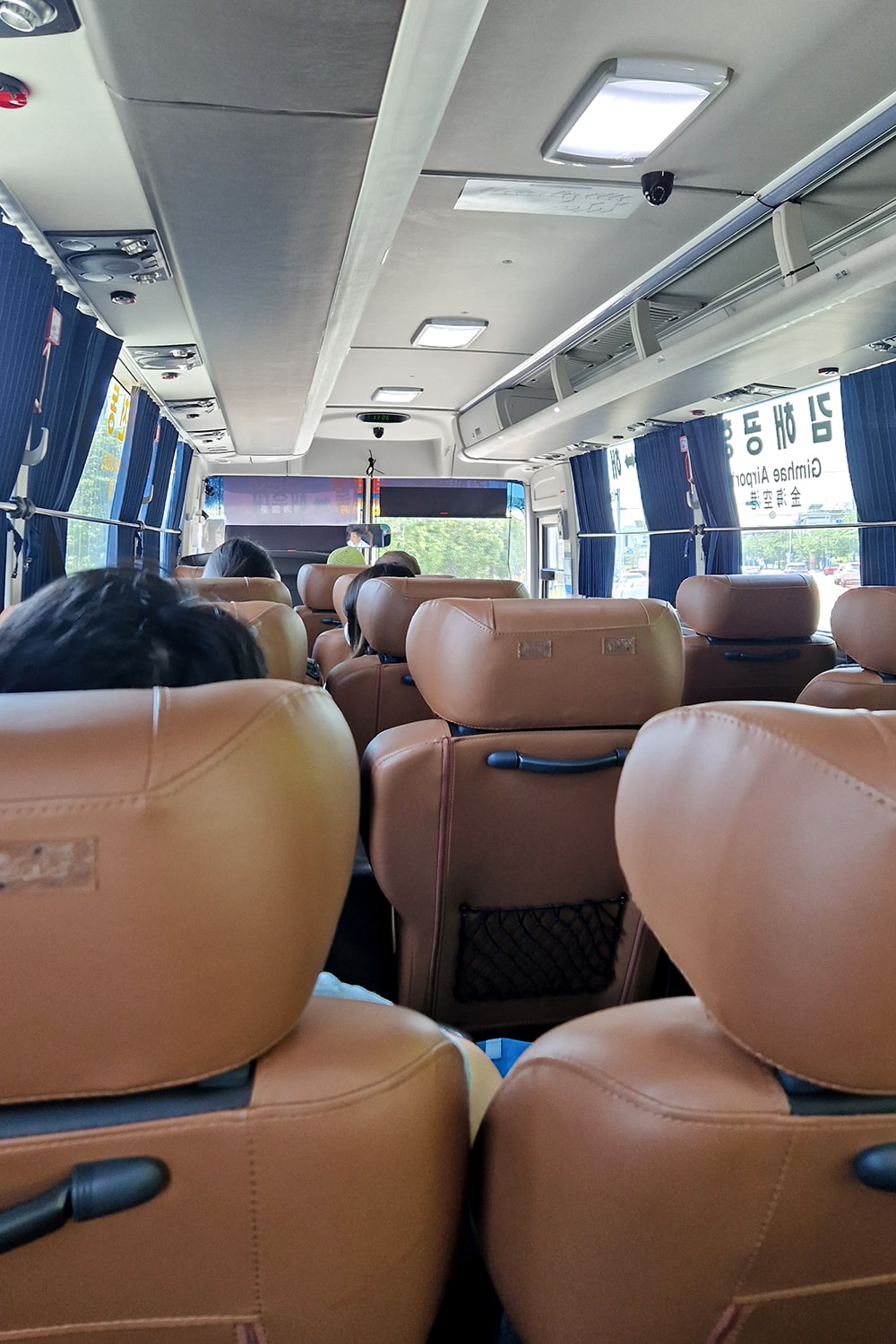
In that case you have three possibilities. Either you can travel to Busan by plane, train or bus depending on where you are traveling from.
✈️ Flying is the option we would recommend, if you head to Busan from Jeju Island. There are numerous flights per day, most of them with budget airlines and the flight will literally not even take an hour!
🚄 Coming from Seoul, we recommend taking the KTX, South Korea’s high-speed train. Within a little over two hours, you can comfortably get from one city to the other.
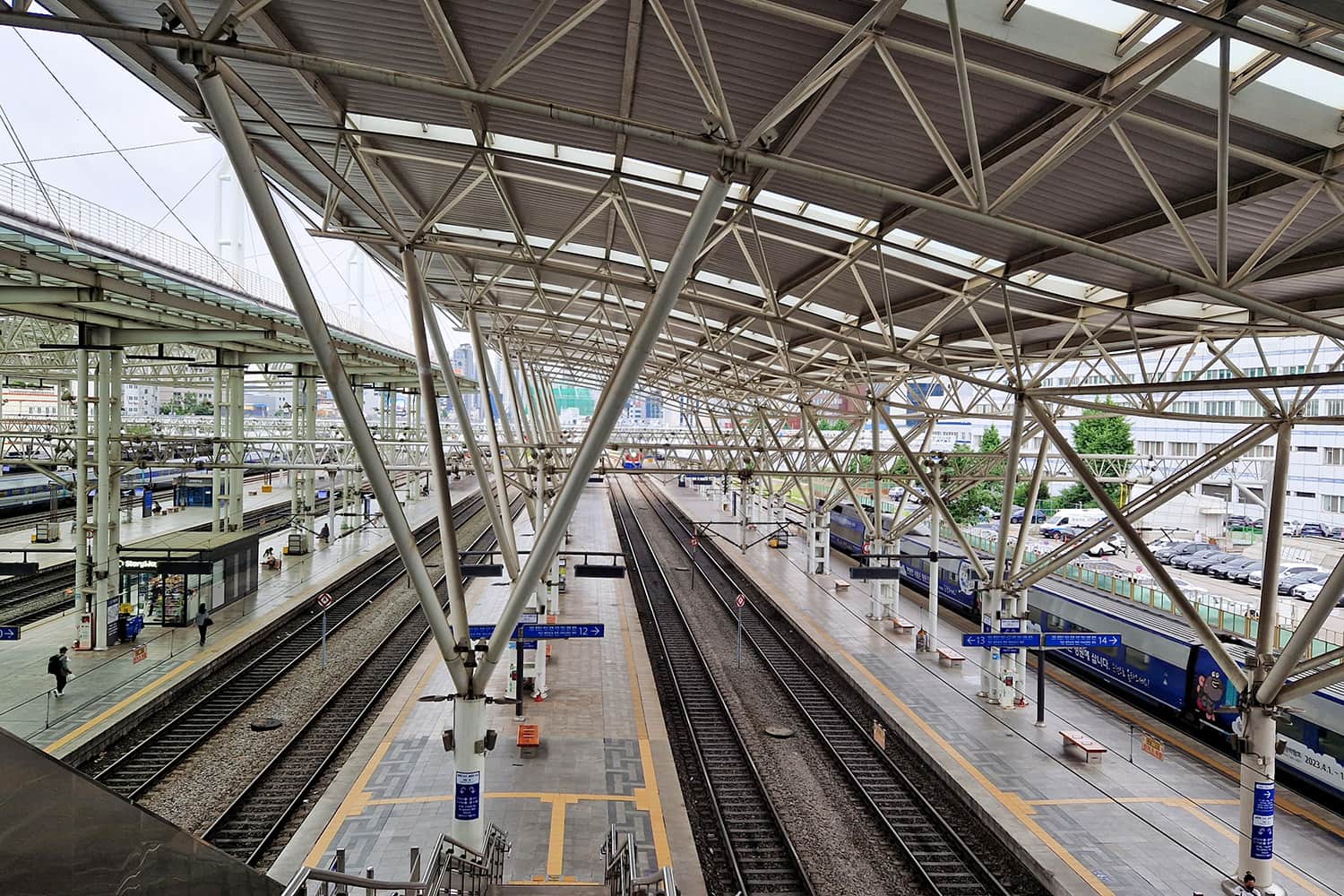
🚌 And lastly, coming from any other city in South Korea, your best bet might be to take the bus. There are Express/ Intercity Bus connections running between all major cities in South Korea daily. Down below you can find the most popular bus connections to Busan (with their respective travel time and price):
Travel to Busan by Express/Intercity Bus: 🚌 from Gyeongju: Travel Time: 1h11min; Price: ~9.500KRW 🚌 from Jeonju: Travel Time: 3h10min; Price: ~35.600KRW 🚌 from Tonyeong: Travel Time: 1h26min; Price: ~13.900KRW
For more in-depth information on how the South Korean Express/ Intercity Bus system works, head to our separate guide on the Best way to travel in South Korea: South Korea’s Bus System.
How to get around Busan?
Getting around Busan is quite convenient as most popular places are easily reachable via public transport. Busan has quite a straight forward subway system which makes traveling from one end of the city to the other really easy. Your closest friends when traveling around Busan are probably the subway lines Nr. 1 and 2😉.
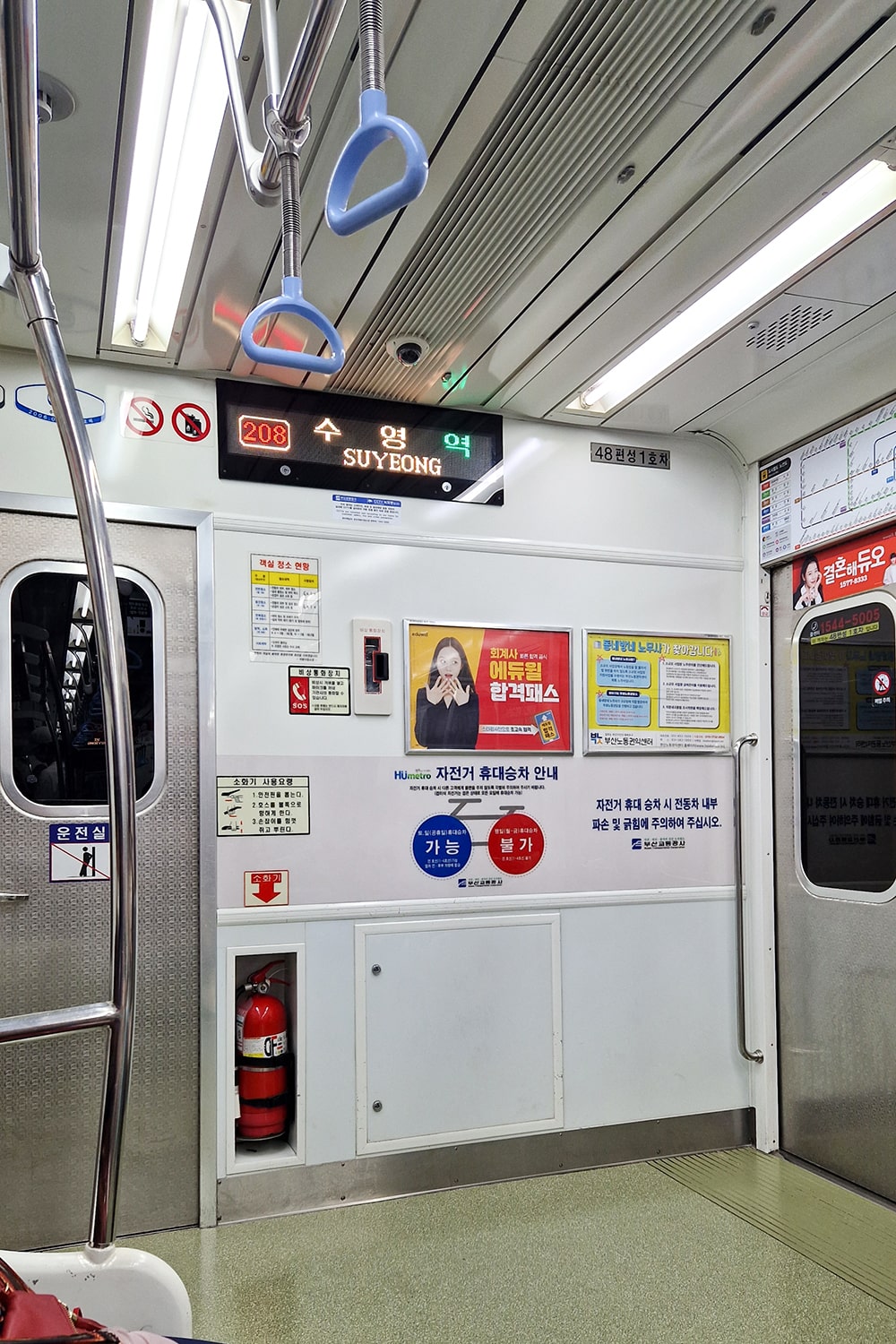
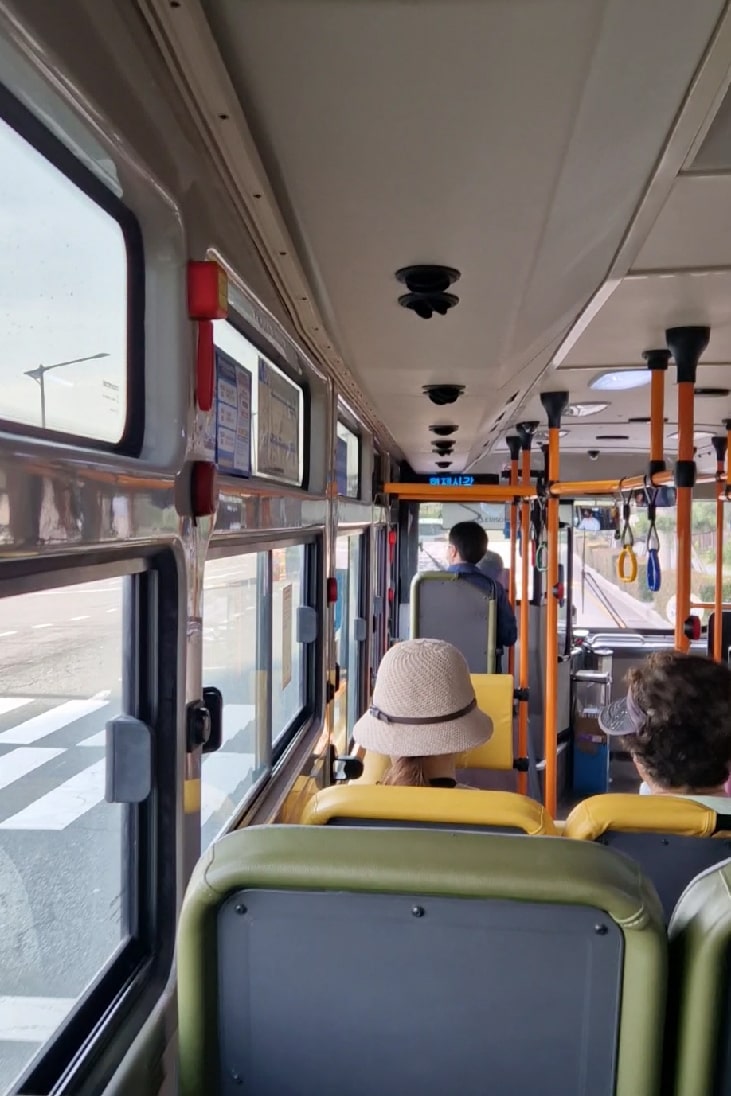
Apart from the subway system, Busan also has a great local bus system. The latter fills the gaps of the subway system and you will need to resort to it when trying to reach a little more remote attractions such as Gamcheon Cultural Village, the Igidae Coastal Walk or Haedong Yonggungsa Temple.
If you do not wish to take the local bus to reach more remote attractions, you can either hire a taxi (which is most easily done via the app Kakao Taxi) or book yourself on a group tour that covers those more remote attractions.
Busan Travel Essentials:
📱 Naver Map. The best navigation app for public transport and getting directions in South Korea.
📱 Kakao Taxi. Since a lot of taxi drivers in South Korea do not speak English, this app will make the process of taking a taxi in Korea so much easier!
🎟️ Visit Busan Pass*. If you plan on doing a lot of activities with entrance fees in Busan, check beforehand if you might save money by buying a 'Visit Busan Pass'! More info (e.g.: price, how it works and whether it is worth it) down below!
🎡 Free Things to do in Busan. In case you are all about saving money while exploring Busan, check out our list of all the free activities you can do!
💳 T Money Card. Get yourself a T Money Card to pay for public transportation! Simply ask the cashier in any convenience store to buy one.
🚡 Klook*. Klook is a great platform to book day tours in and around Busan, a SIM Card or transfers even before arriving!
Ultimate 3-4 Day Busan Itinerary for first time visitors
Now that the framework of your trip to Busan is set, we are ready to delve into the itinerary itself! Down below you will find an in-depth daily schedule covering most of the cities’ popular neighborhoods and must see attractions!
Day 1: Arrival, Nampo-dong and Jung-gu Area
On your first day, you will probably spend the better half of your morning traveling to Busan. Once in the city, head to your accommodation and either check-in or leave your bags with the hotel. Then it is time to get your first glimpse of Busan.
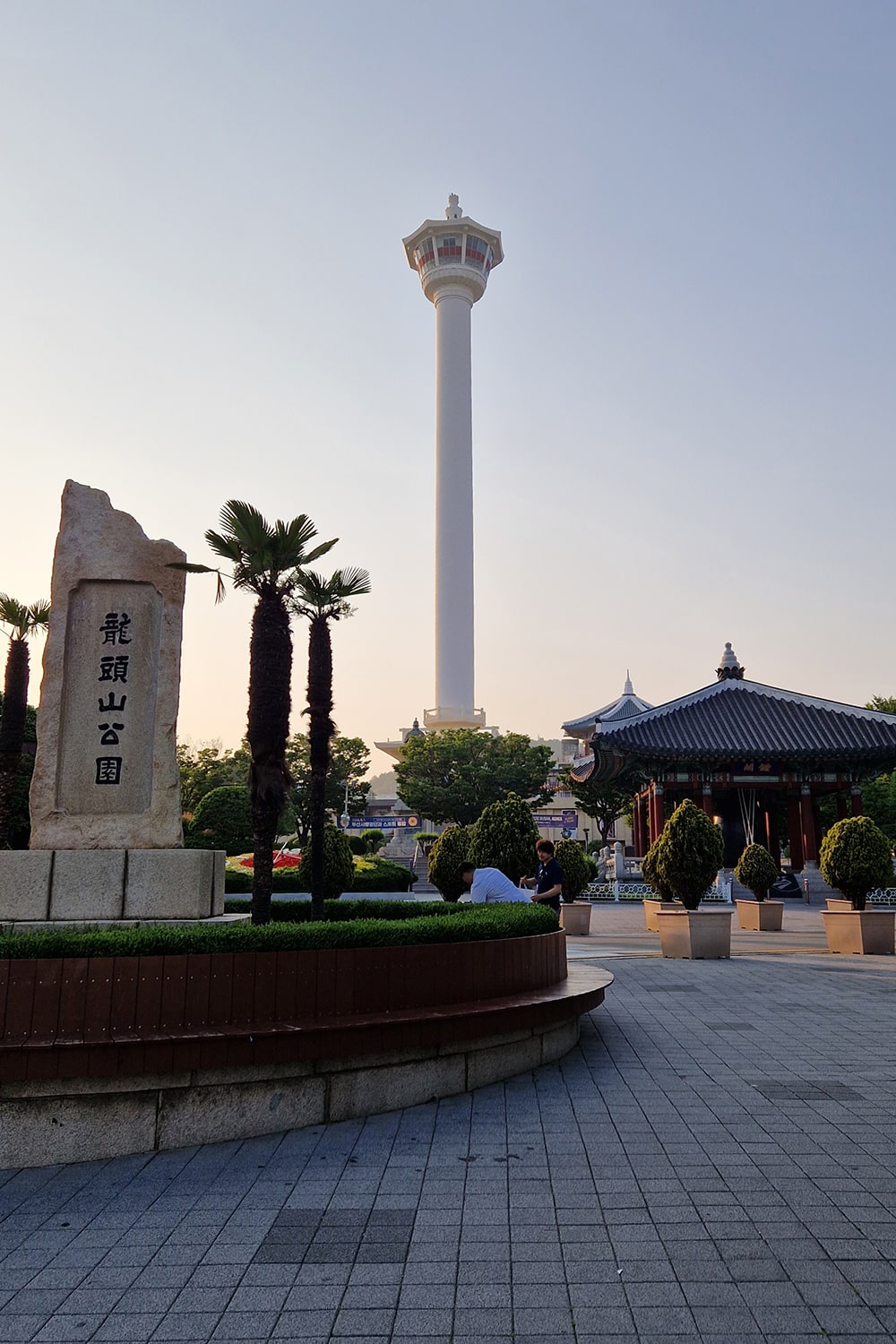
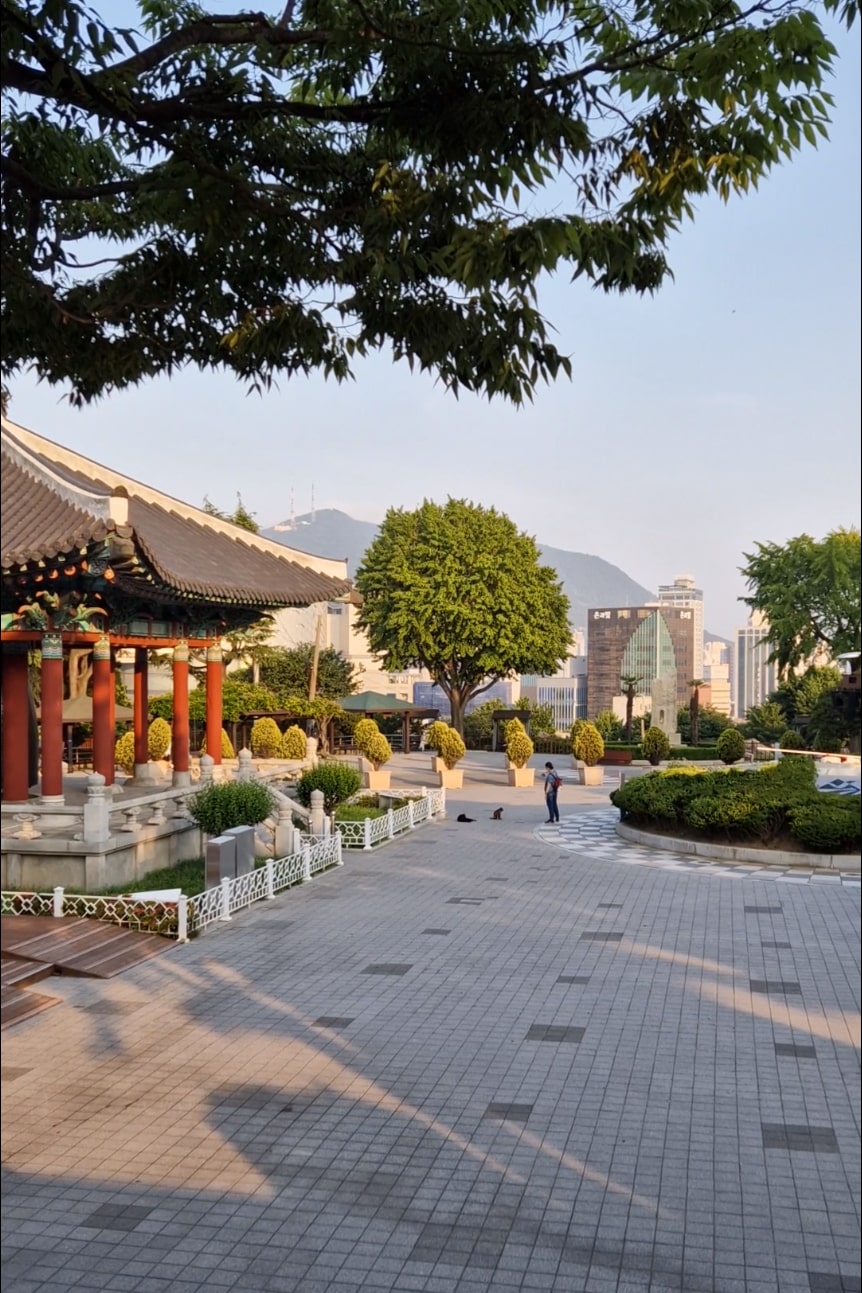
Today you will be exploring Nampo-dong and Jung-gu area. Jung-gu used to be Busan’s downtown (before Seomyeon area) and both neighborhoods hold a lot of history and authentic insights into Korean culture.
That is also why they are the perfect place to start exploring Busan! Especially, since you will be heading towards the more modern and fancy areas of Busan over the next few days as well.
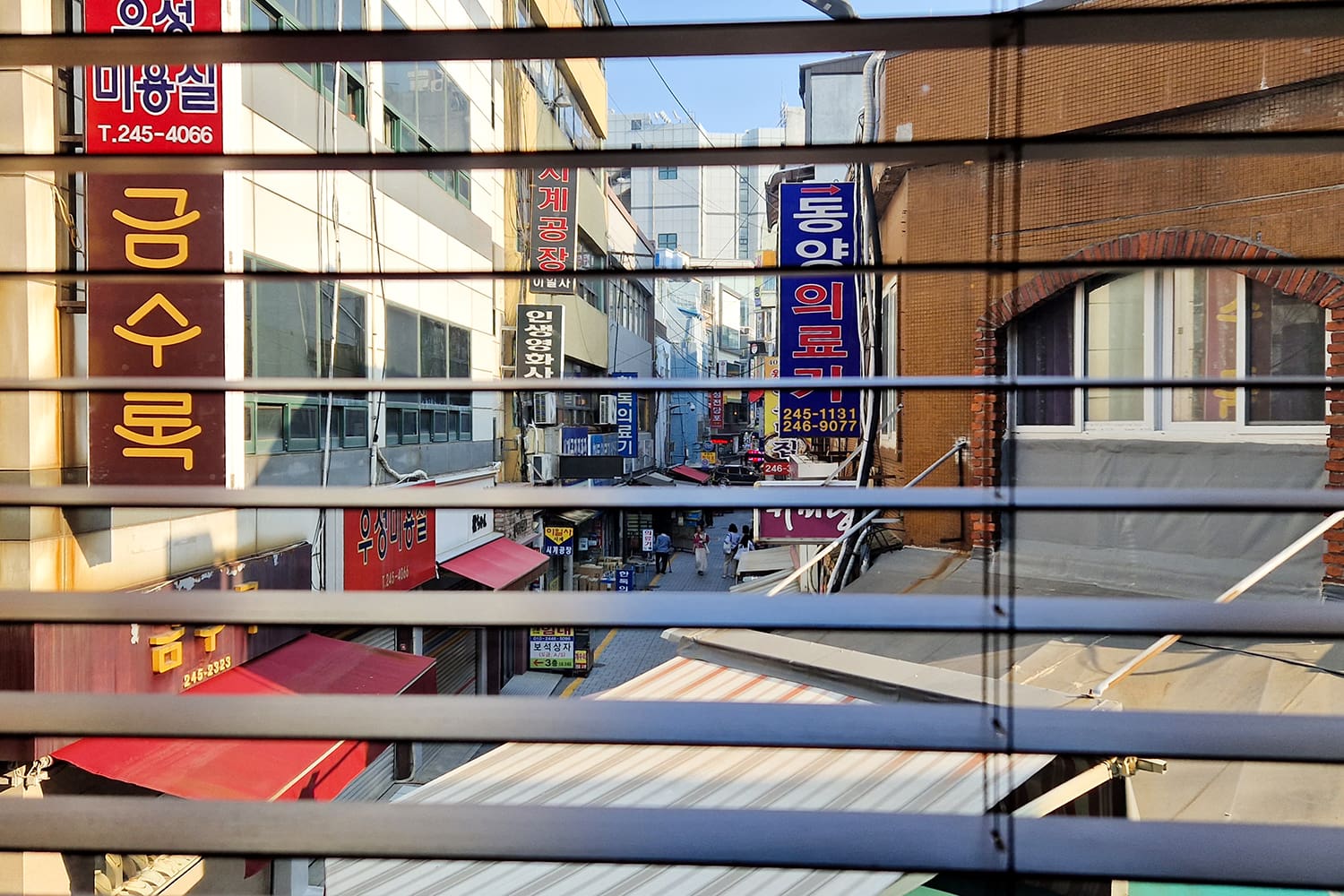
Nampo-dong and Jung-gu are home to a number of buzzing markets, unique shopping streets and interesting attractions. The following list contains the most noteworthy and should serve you as a list of possible activities you can fill your first day with depending on what you are most interested in!
Things to do in Nampo-dong/ Jung-gu Area:
🗼 Busan Tower. View Busan’s skyline from the cities iconic Diamond Tower. Entrance Fee: 12.000KRW per person.(Included in the Visit Busan Pass)
🖼️ Yongdusan Park. Escape the bustling city and relax in this stunning park, hidden away on a hill! The escalators to get there are an attraction in itself.
🦐 Jagalchi Market. Try seafood in Busan’s most famous seafood market. Note: Some restaurant can be a bit of a (pricey) tourist trap though so make sure to research beforehand if you want to eat here.
🛍️ Gwangbok-ro Fashion Street. Explore Gwangbok-ro and Gwangbok-dong street for unique clothing shops. For your typical fashion shops and brands, head to the Lotte Department Store Gwangbok (next to Nampo Station).
🍢 Gukje and Bupyeong Kkangtong Market. In case you haven’t visited enough markets yet;).
🌟 BIFF Square. Korea’s version of the Hollywood Walk of Fame. There is a street food market here every night.
📚 Bosu Book Street. Dating back to the 1950's, when Busan was temporarily South Korea's capital, this street is filled with stores of varied sizes selling books!
Optional: If you have more time on your first day in Busan, you might want to check out Songdo Marine Cable Car. You can ride the cable car to Amnan Park and enjoy views of Songdo Beach, Namhang Bridge and the coastline on the way! Entrance Fee: 17.000KRW per person for a return ticket (Included in the Visit Busan Pass).
Where to eat in Jung-gu and Nampo-dong:
- ‘述古堂(Sulgodang)’ was our absolute favorite restaurant in Busan. (Address: South Korea, Busan, Jung-gu, Junggu-ro 24beon-gil, 11-1 2층 or 422H+3M Busan, South Korea on Google Maps)! They offer really good quality food from traditional meat based dishes to a few vegetarian options as well. With each meal they give you at least five banchan to share, which they will refill for free as often as you want!
- Otherwise there is a street food market held at BIFF Square every night. It is quite worthwhile if you are looking for your fill on all things Korean street food!
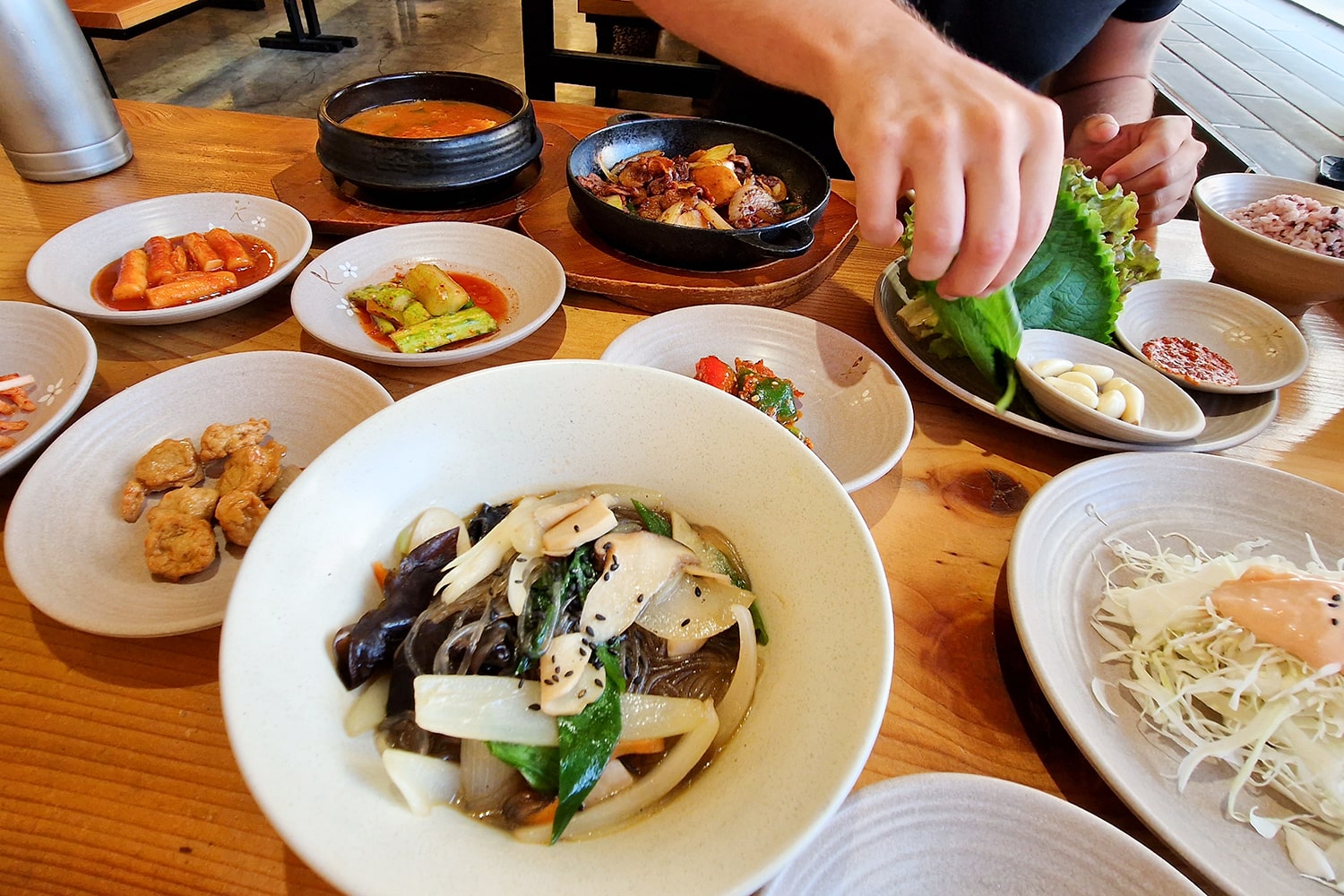
Day 2: Haeundae Beach, Mipo and Cheongsapo
On your second day in Busan, you will be heading all the way east to explore the beautiful Haeundae Beach area and the charming ports of East Busan!
Start the day off by making your way towards Haeundae. The first destination of today will be Cheongsapo. Now, there are several ways to get there. Choose the one best suited for you based on your budget, priorities and interests.
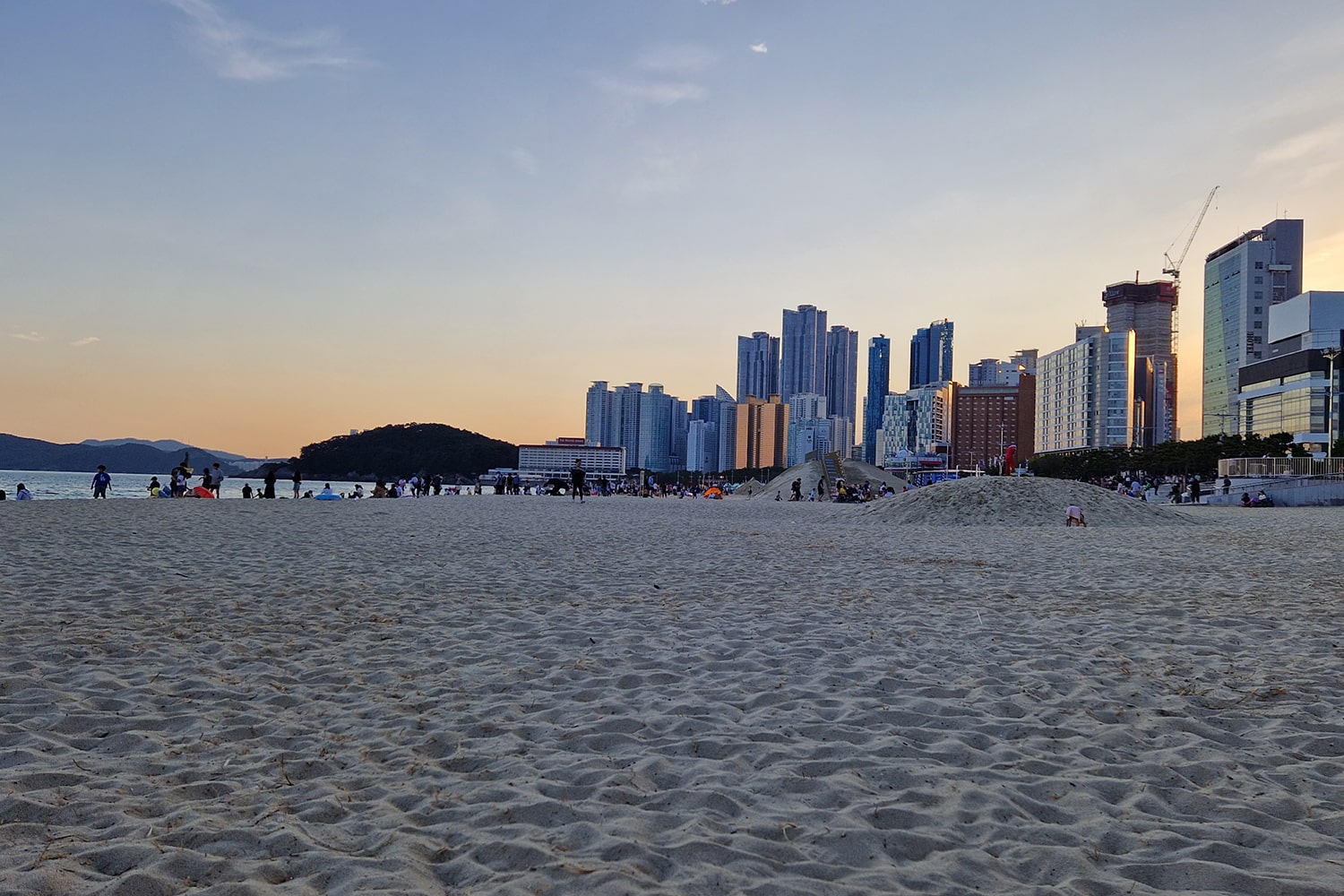
How to get to Cheongsapo from Haeundae
- The cheapest way and our favorite one is to simply walk. Alongside the coastline from Mipo Station all the way towards Cheongsapo Port, you will find the Busan Green Railway, a flat walkway that can get you from one place to the other within a scenic 2.4 kilometers walk.
- Another option would be to either take the local bus or a taxi.
- The most expensive, but probably the most comfortable and scenic way to get to Cheongsapo from Mipo (and the other way around) is to take either the Coastal Train or the Sky Capsules. You can book your tickets on the official BluelinePark website. Note: The Visit Busan Pass includes a 2-way ticket for the Coastal Train.
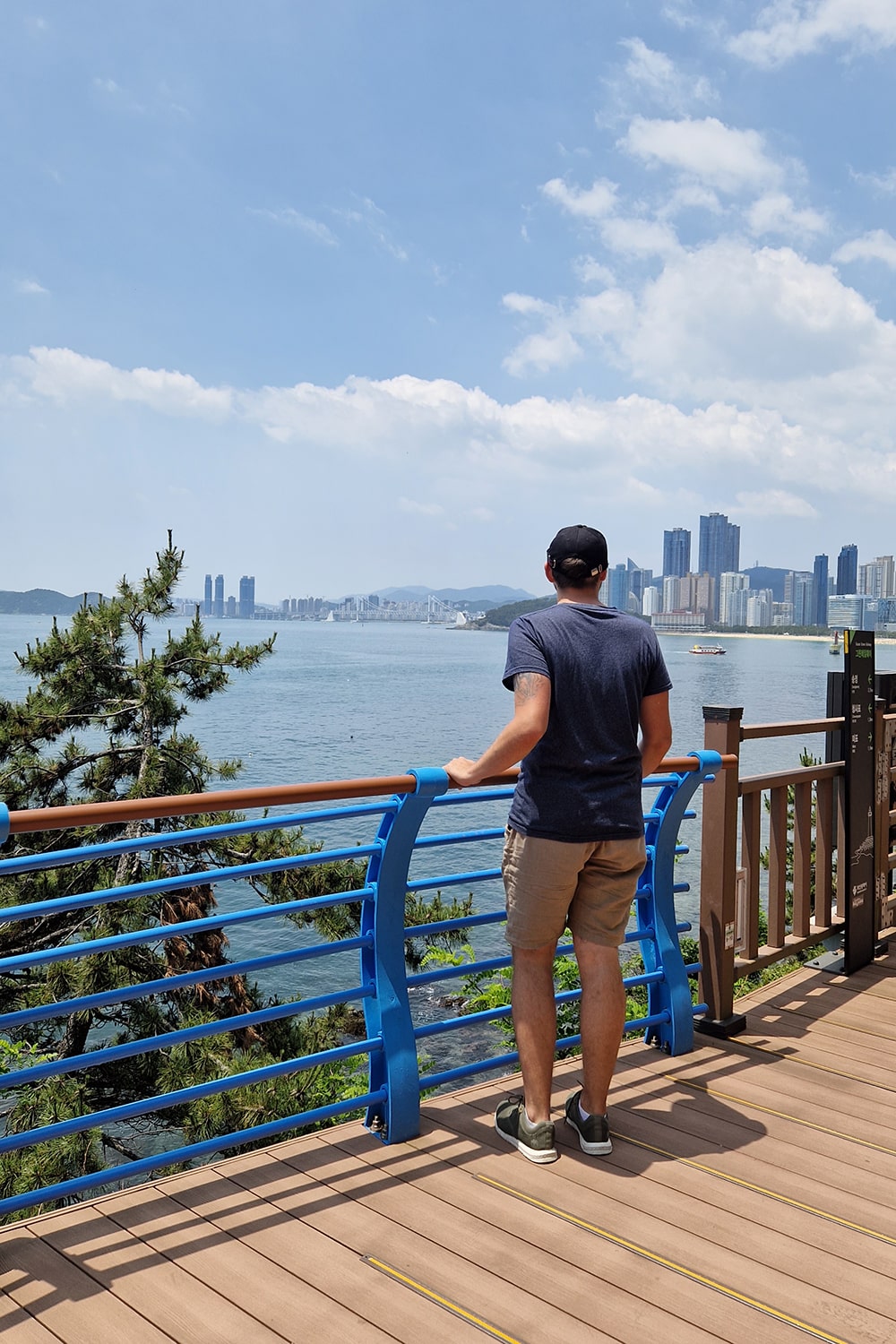
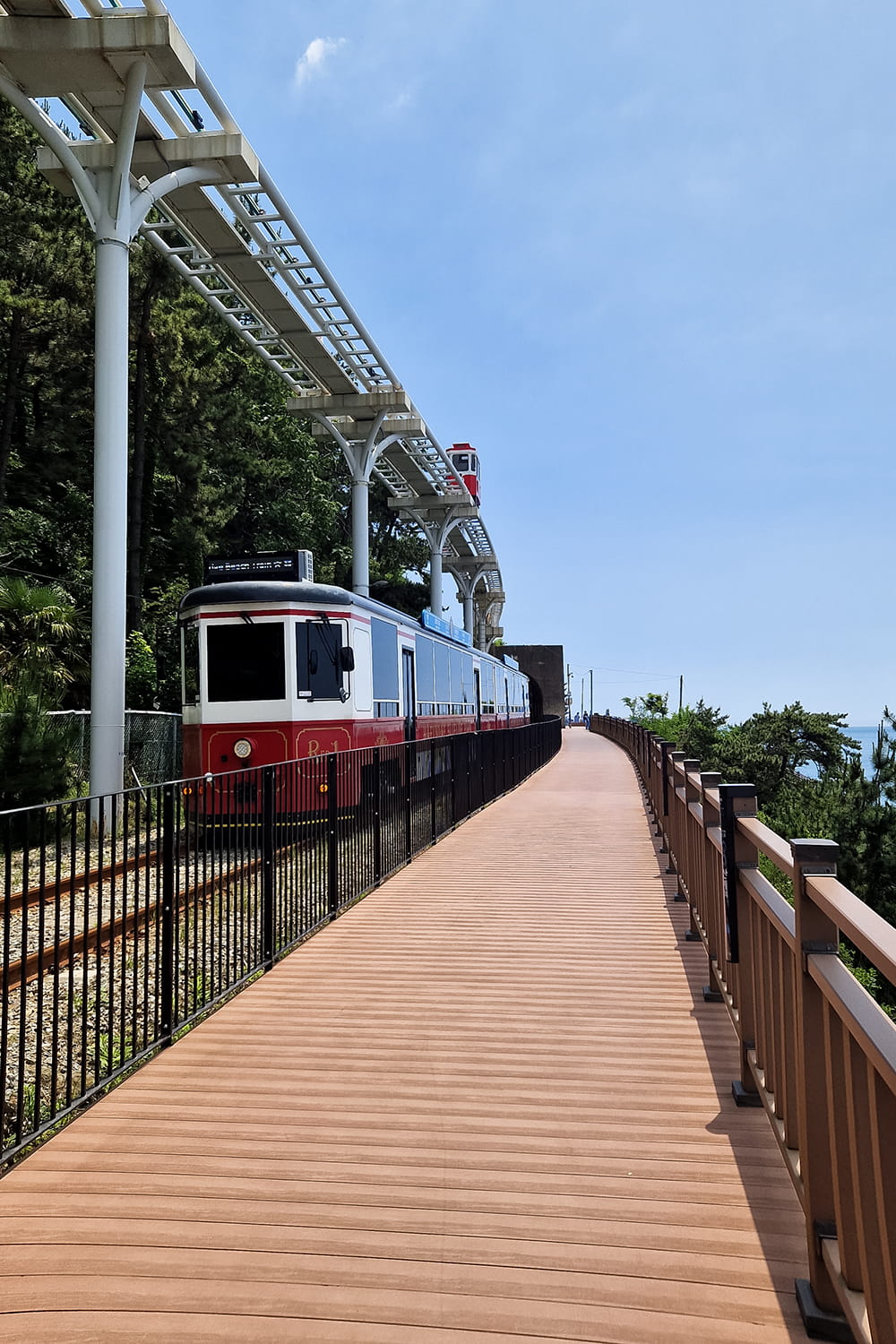
Once in Cheongsapo, it is time to head for a quick breakfast or simply a coffee if you haven’t had one already. Cheongsapo is home to a few lovely cafés to do just that.
🍵 Head to 'Cheongsapo Hanok Lounge', 'DIART Coffee' or 'Café Rooftop Cheongsapo' for great coffee and a lovely atmosphere. Be aware though, like everywhere in South Korea, cafés often won't open until 10:30 to 11 a.m.!
After a quick coffee break, it is time to start exploring Cheongsapo Port a bit more in depth.
- Cheongsapo Daritol Observatory. Following the Busan Green Railway walkway from Cheongsapo Station a little further east you will reach a lovely glass platform reaching over the sea. Entry is free of charge!
- Sky Capsule Picture Spot. For a great picture spot with Busan’s colorful sky capsules head to ‘Cheongsapo-ro 58 beon-gil’!
- Cheongsapo Twin Lighthouse. Marvel at the twin lighthouses, marking the entrance to Cheongsapo Port. There is a dedicated viewpoint in form of a staircase right next to the bus stop!
- Eat Seafood. If you are into seafood, there is no better place to get your fill than in one of the numerous seafood restaurants lining the coastline of Cheongsapo Port!
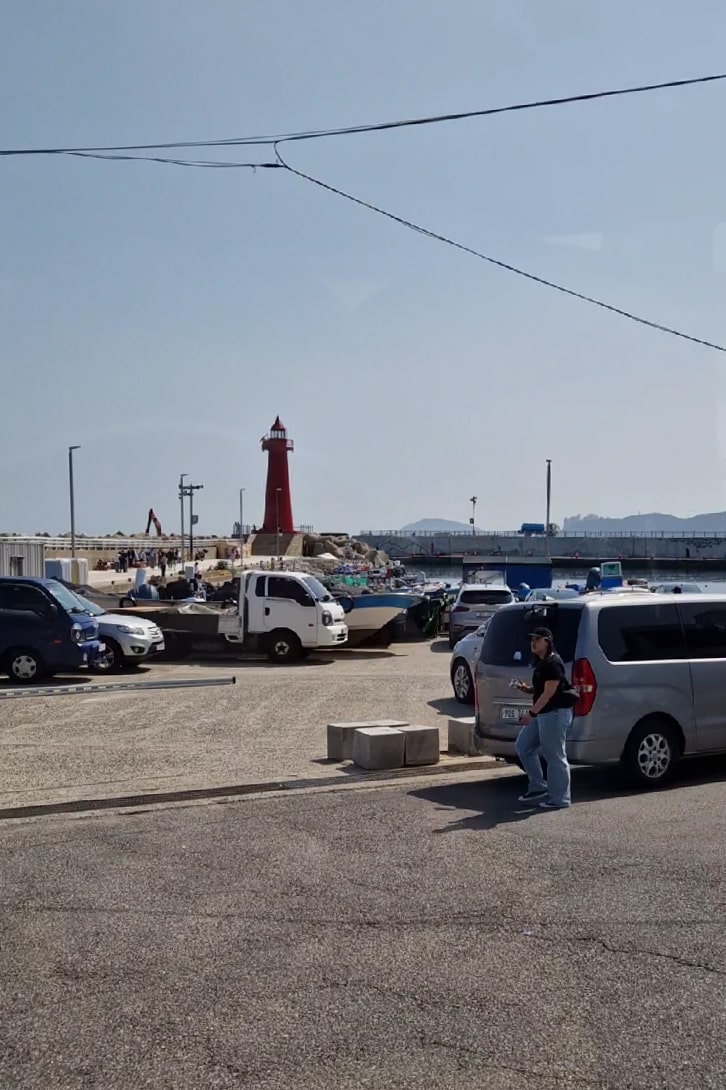
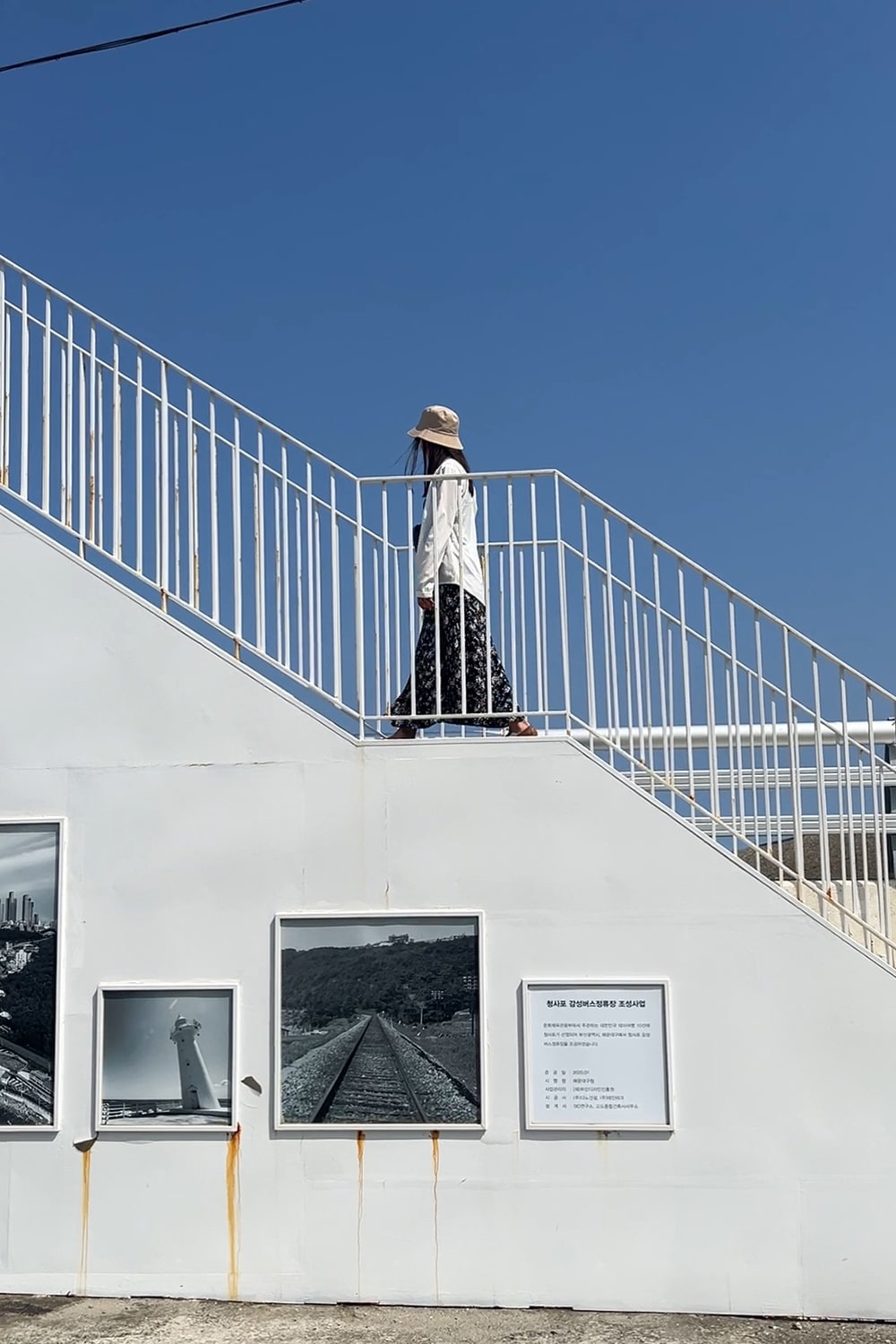
Spend the afternoon at Haeundae Beach
After spending quite some time in Cheongsapo, slowly make your way back to Haeundae Beach. If you are on a budget, we would suggest taking the local bus (at the bus stop with the viewpoint staircase) back. If you bought a return ticket for the Coastal Train or Sky Capsules, then make your way to Cheongsapo Station to ride back to Mipo.
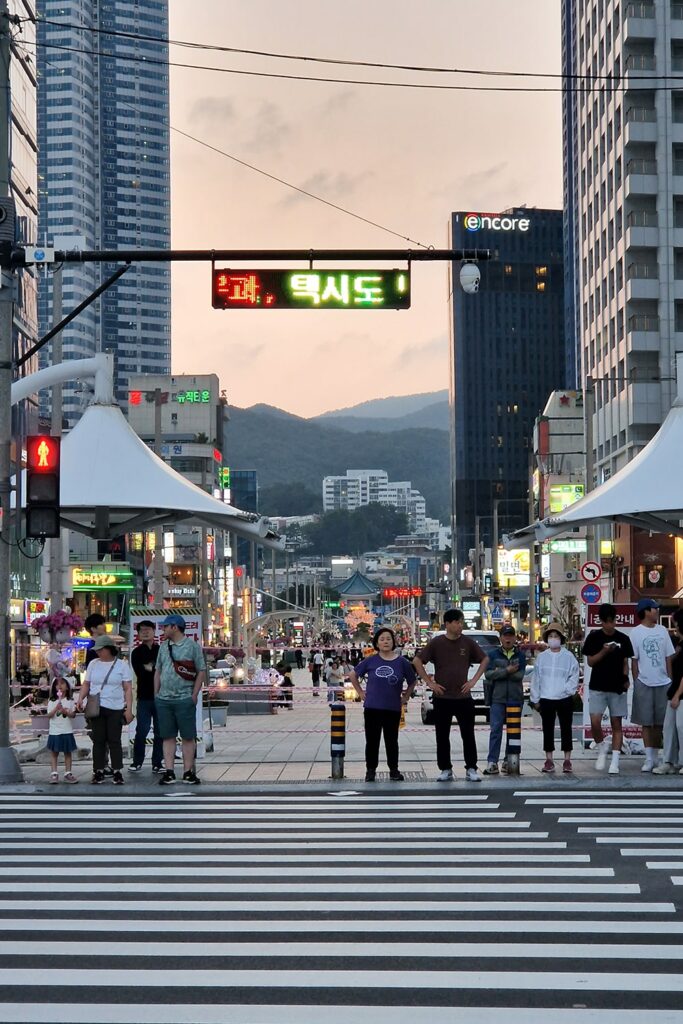
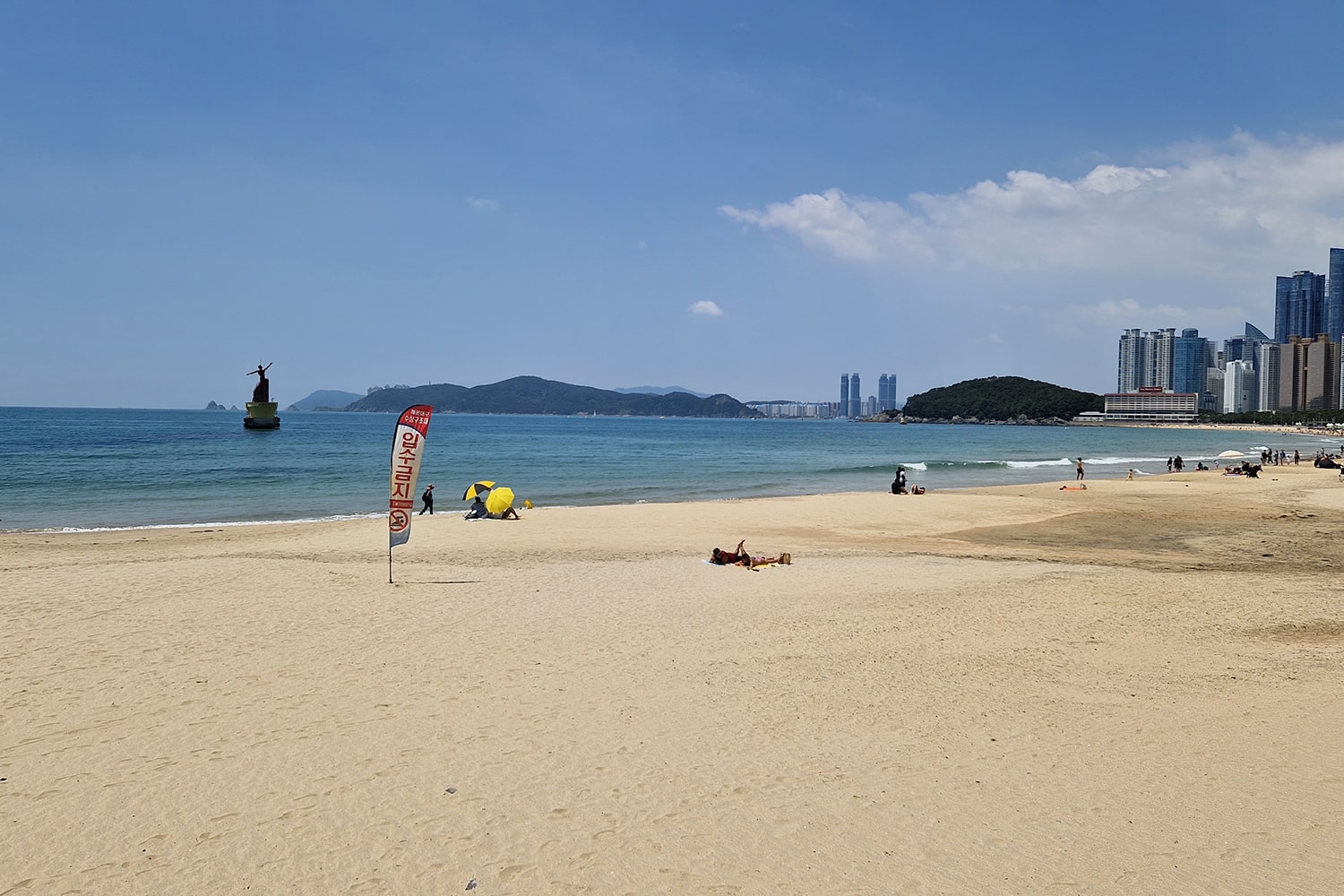
You will be spending the second part of your day exploring Haeundae. The latter is quite a new and more glamorous quarter of Busan and can be considered as Busan’s best vacationing spot.
Head to Haeundae Beach for a relaxing afternoon sitting in the sand and enjoying the views of the sea. There are a number of convenience stores near the beach so you can get yourself an ice cream to enjoy or maybe go for a drink in one of the nearby hotels if that is more your jam.
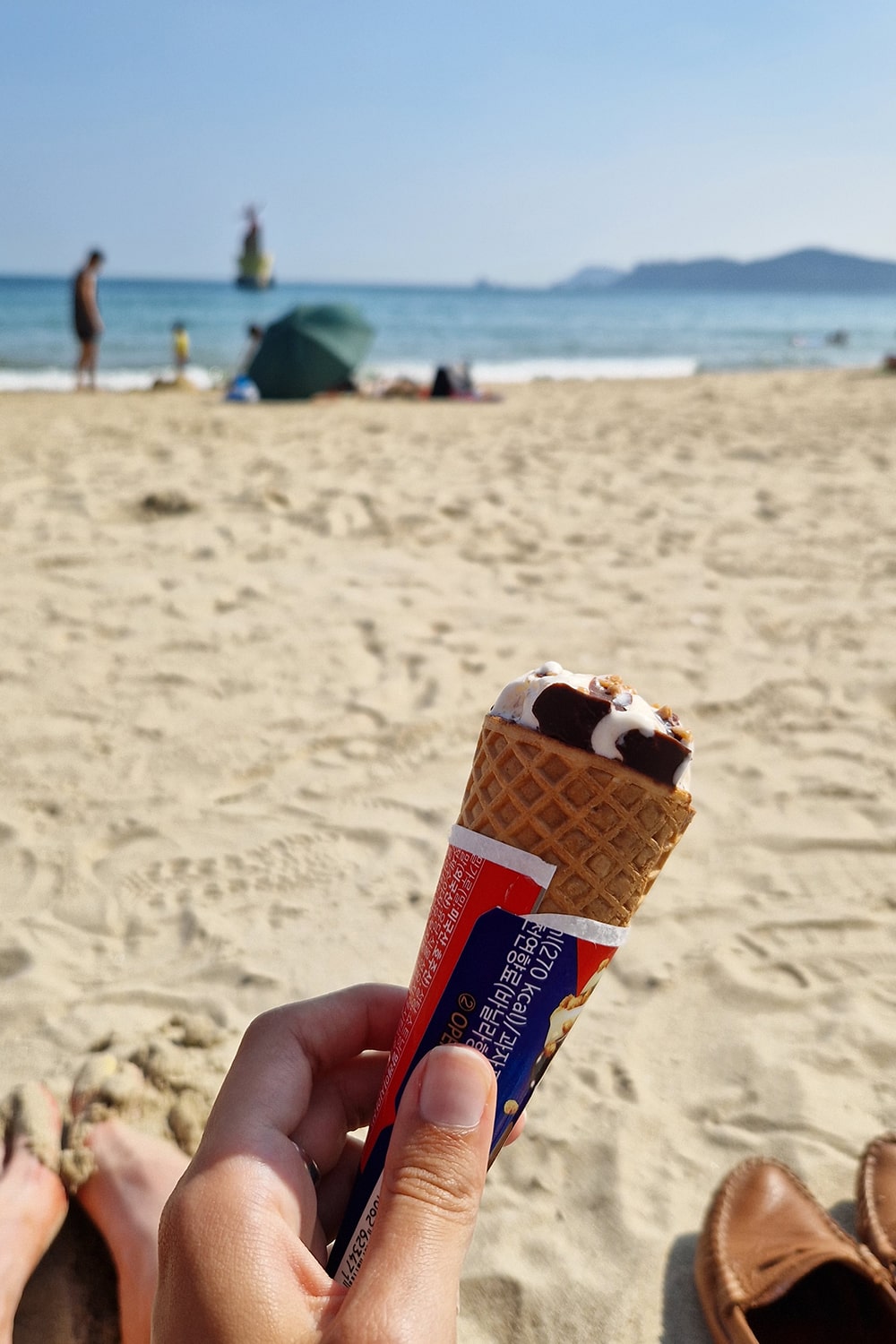
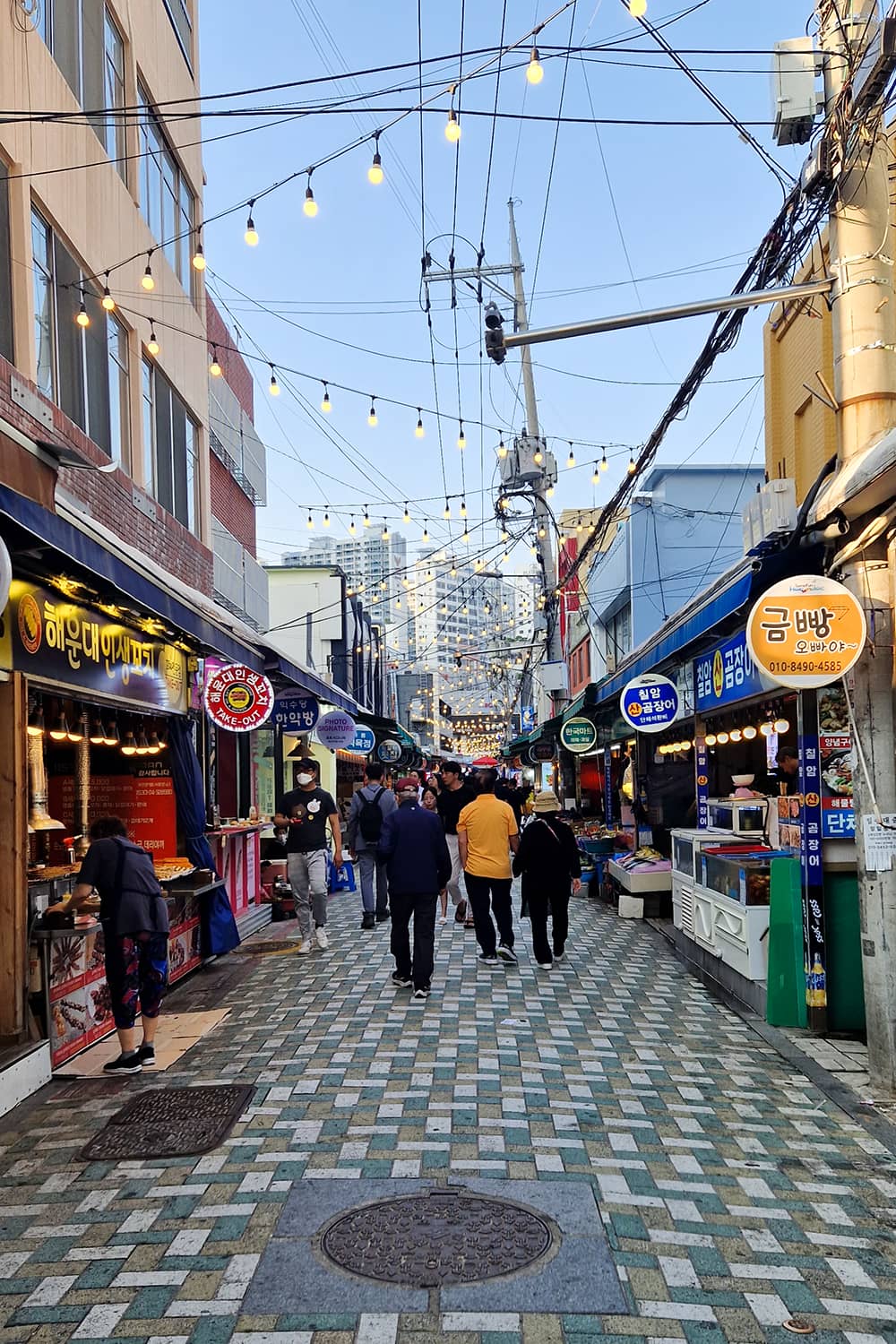
For great views of Haeundae Beach and Busan, head to Busan X the Sky. The latter is located within the Haeundae LCT Landmark Tower, which is -fun fact- the second tallest building in South Korea! Entrance will cost 27.000KRW per person. It is however included in the Visit Busan Pass in case you are interested.
Awesome street food and nightlife in Haeundae!
Later in the afternoon, head into the streets of Haeundae. ‘Gunam-ro‘ is the main walking street in Haeundae area, with numerous restaurants, karaoke bars and photo studios for your entertainment.
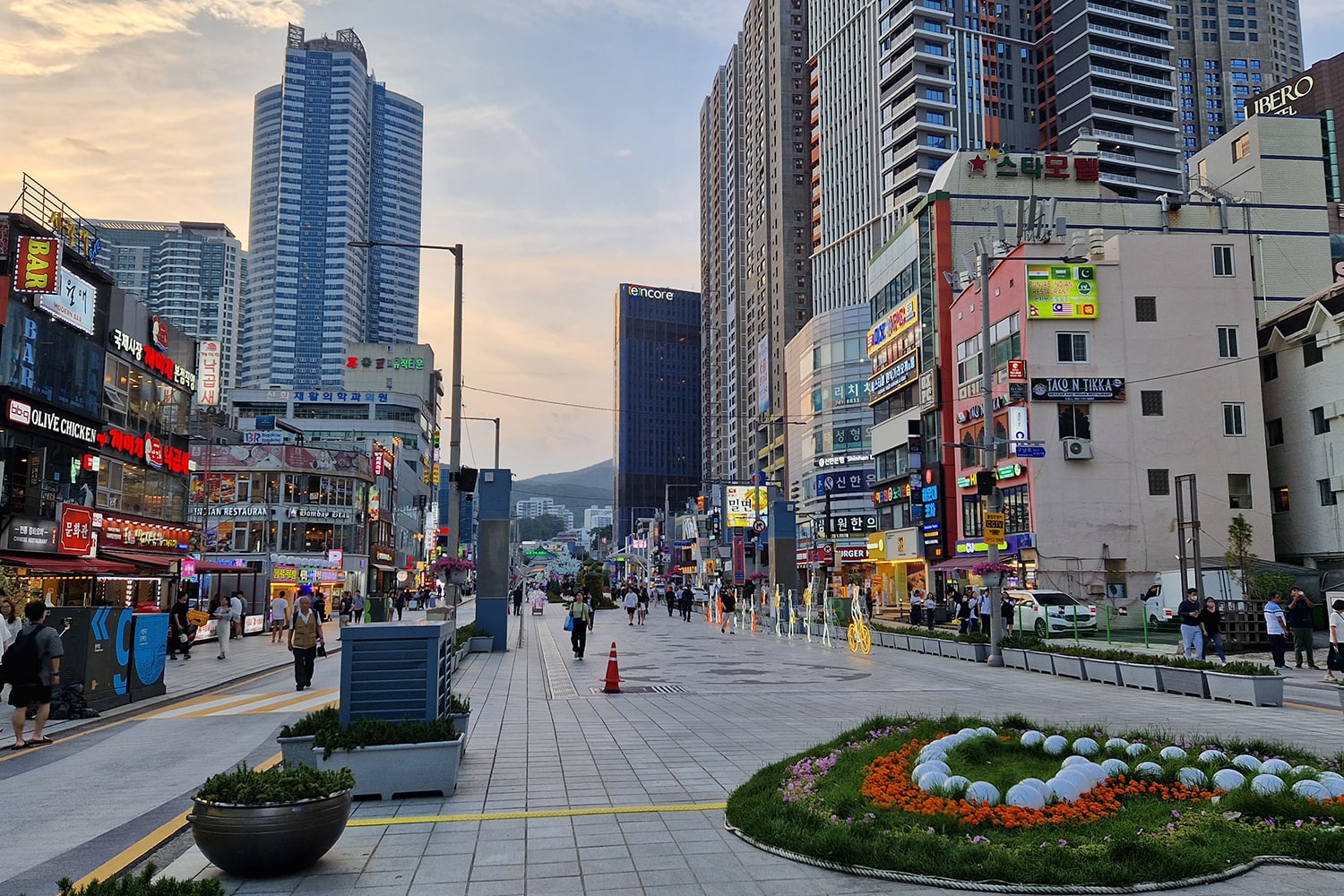
Just right off of ‘Gunam-ro‘ you will find ‘Haeundae Traditional Market‘. The latter is a side street filled with street food stalls, souvenir shops and also quite random shops. It is the perfect place though to select your dinner options.
- Our hot pick would be a dumpling shop called ‘Nohong Mandu(Dumplings)‘ located in the middle of ‘Haeundae Traditional Market’. They make their dumplings by hand and then steam them right in front of your eyes! Highly recommend!
- Another favorite of ours is a gimbap shop called ‘Cheongdam-dong Manyeo Gimbap Heaundae‘ (Address: 269 Haeundaehaebyeon-ro, Haeundae-gu, Busan, South Korea or 5556+W8 Busan, South Korea on Google Maps). They make a variety of different gimbap (better than the convenience store ones!), quite affordable and really tasty!
- Finally, no street food dinner would be complete without some Korean fried chicken! We bought ours at a shop called ‘가마로강정 해운대점’ (Address: 22 Gunam-ro, Haeundae-gu, Busan, South Korea or 5565+PX Busan, South Korea on Google Maps) . It was quite good, however, the best fried chicken we had in South Korea will forever be the Mansuk Dak Gangjeong Fried Chicken in Sokcho!
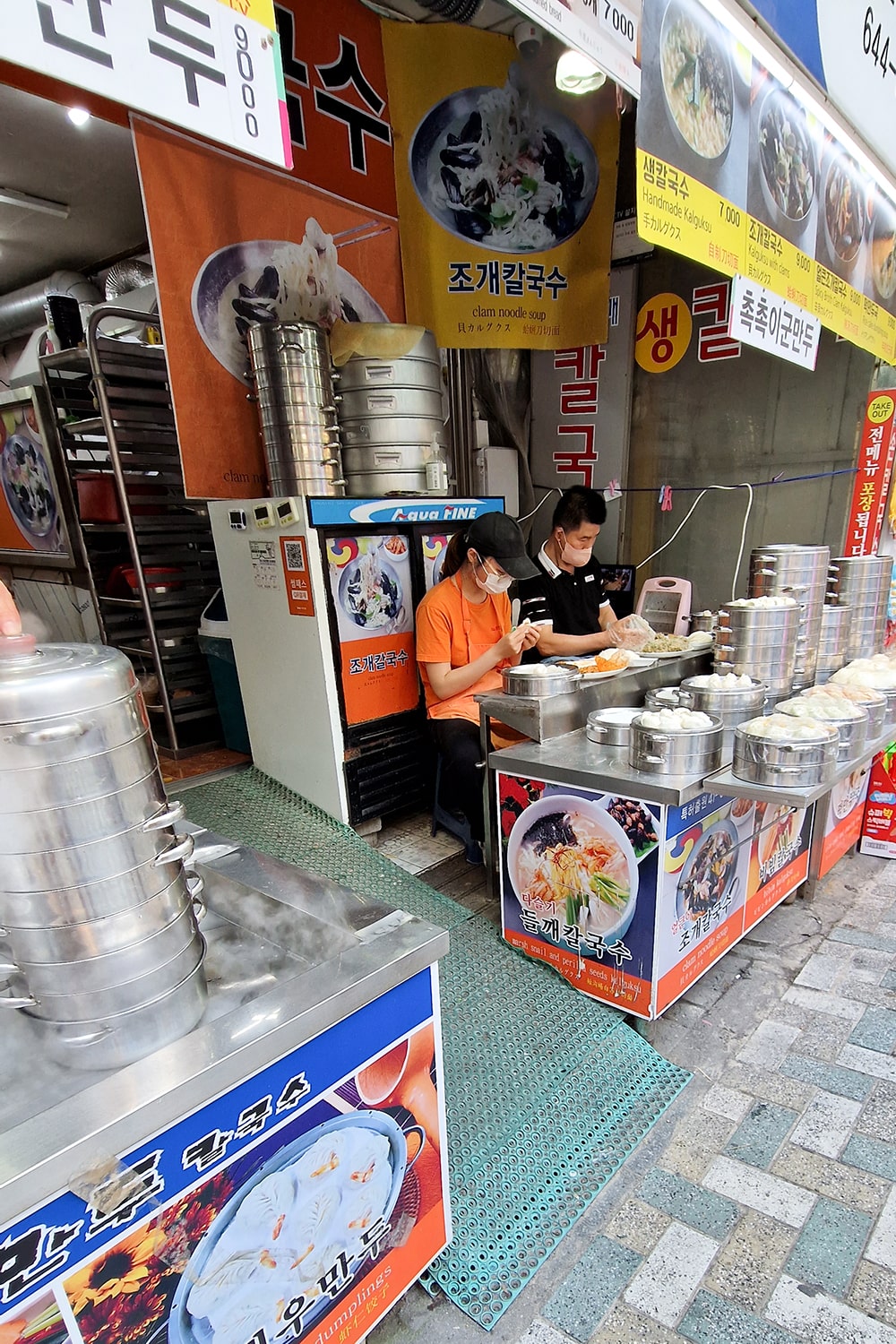
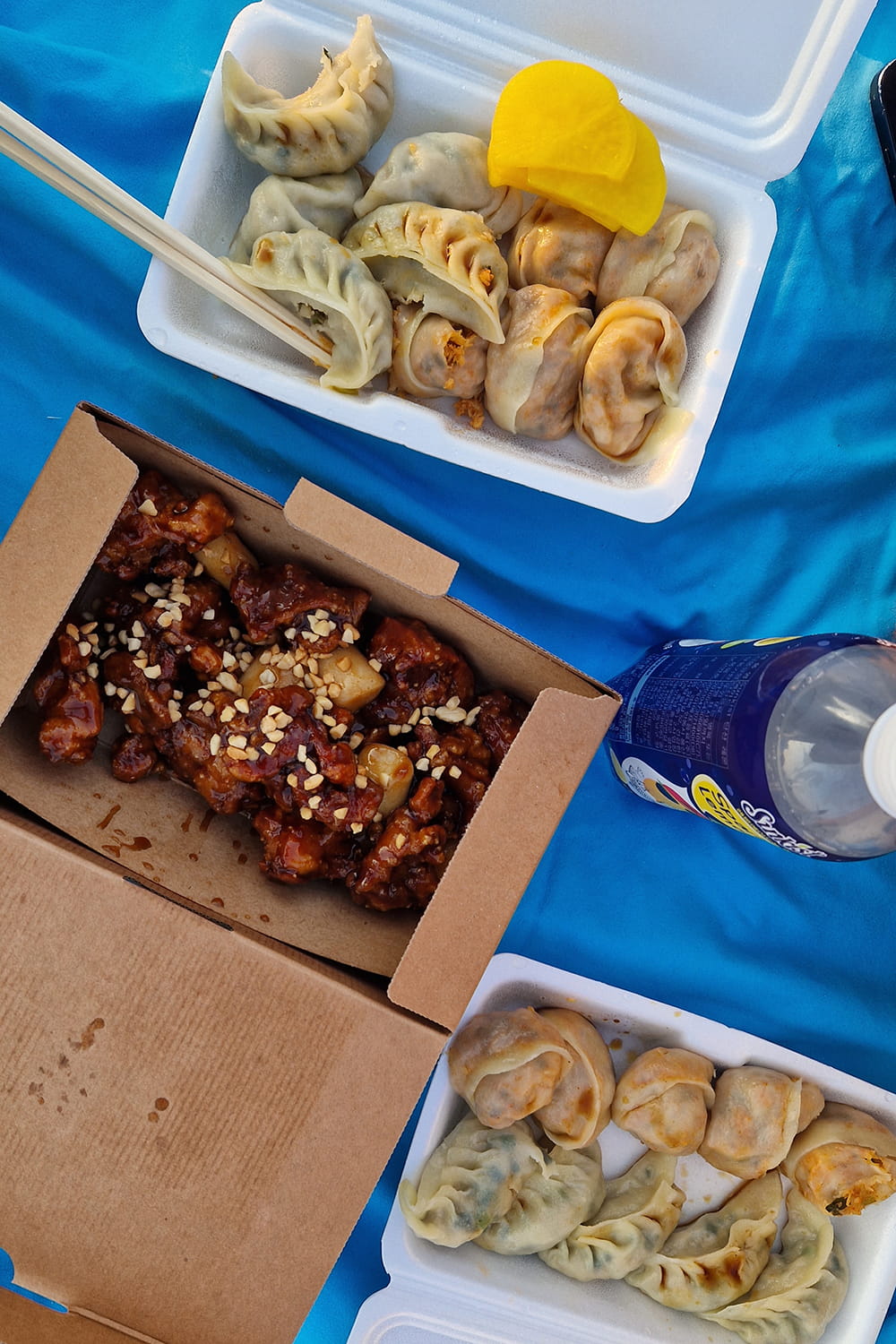
Now, take all your finds with you to the beach for a lovely picnic by the sea. Since the sun usually sets somewhere between 7-8 p.m. there is a high chance that you can catch the sunset while or just after finishing your dinner.
Spend a relaxing evening at Shinsegae Spa Land in Centrum City!
Afterwards you have two options: (1) either you spend some more time in Haeundae, walking around and enjoying the street performers and all the buzzing that emerges in the streets as soon as night falls. (2) Or, you head to ‘Shinsegae’s Spa Land Centrum City’ for a very Korean late night spa experience.
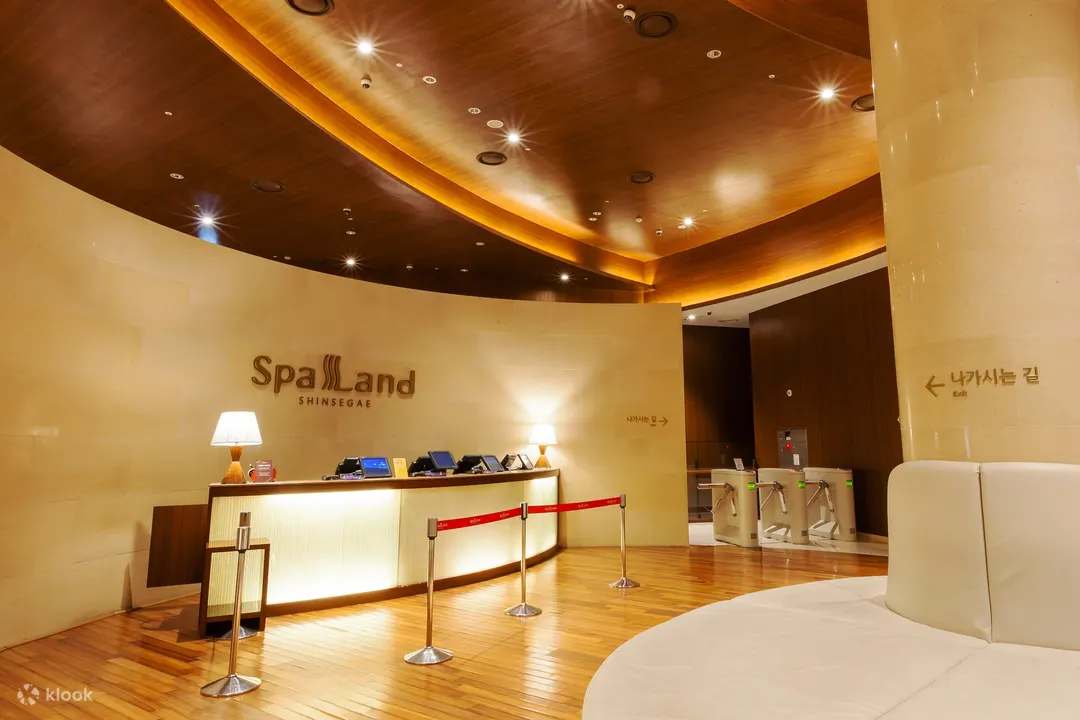
If you are a little familiar with Korean culture (maybe through K-dramas or what not) you will know exactly what we mean. If you are not, then let me explain:
- In Korea, it is quite a popular activity to go to a bathhouse with your friends and spend a few hours there.
- Many bathhouses are open 24/7 which is why it is a popular late night activity as well. Note: Spa Land Centrum City will close at 11 p.m. though.
- Typically Korean bath houses are equipped with hot spring water pools, themed saunas, relaxing areas, restaurants and depending on the spa several other facilities such as e.g. a foot spa, a srub experience, etc.
- The pools are usually gender separated as you will be naked when going inside them.
- For the mixed areas such as the saunas and relaxing areas you are given a t-shirt and shorts to wear when entering the bath house.
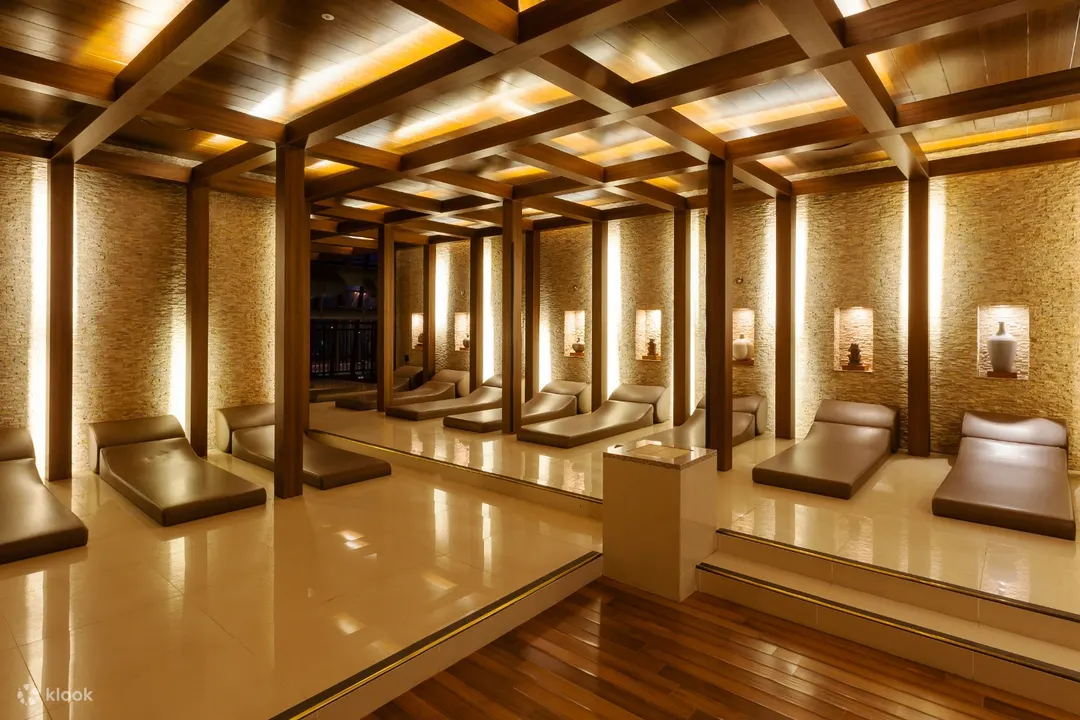
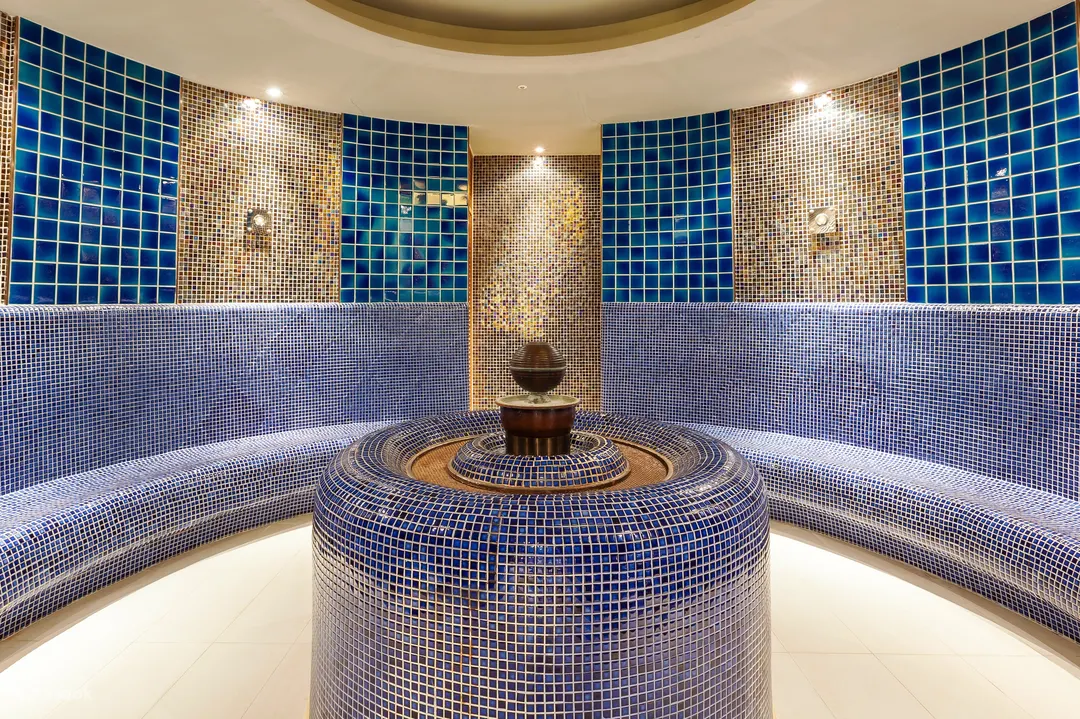
Shinsegae Spa Land is supposedly the most modern and fancy spa facility in all of South Korea and therefore quite worth a visit. And, it is located inside Busan’s Shinsegae Centrum City Mall, which holds the Guinness World Record for being the biggest department store in the worlds since 2009!
Entrance to Shinsegae Spa Land costs 17.000KRW on weekdays and 20.000KRW on weekends. This experience is included in the ‘Visit Busan Pass’ as well.
Day 3: Gamcheon Cultural Village, Igidae Coastal Walk and Gwangalli Beach
On your third day in Busan, it is now finally time to visit the cities’ famous and colorful mural village: Gamcheon Cultural Village!
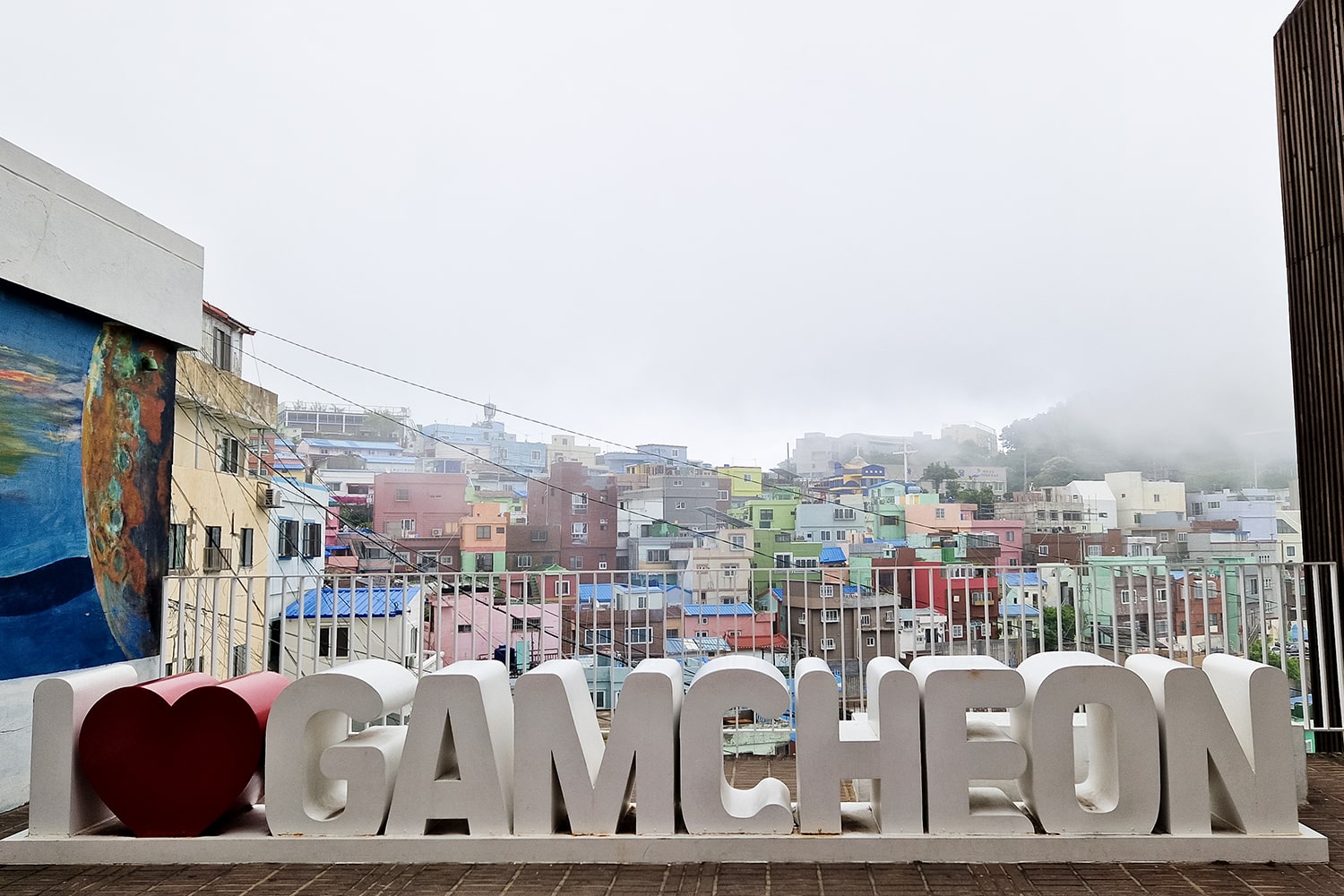
Perched at the foothill of a mountain, Gamcheon Cultural Village is filled with terraced colorful houses as well as artsy staircases, mural art and sculptures. You can easily spend 2-3 hours in the morning in Gamcheon Cultural Village.
Especially, if you like exploring the numerous side alleys and lovely shops or spend some time in one of several cafés offering panoramic views of the village! Our recommendation would be to check out ‘Coffee It House‘!
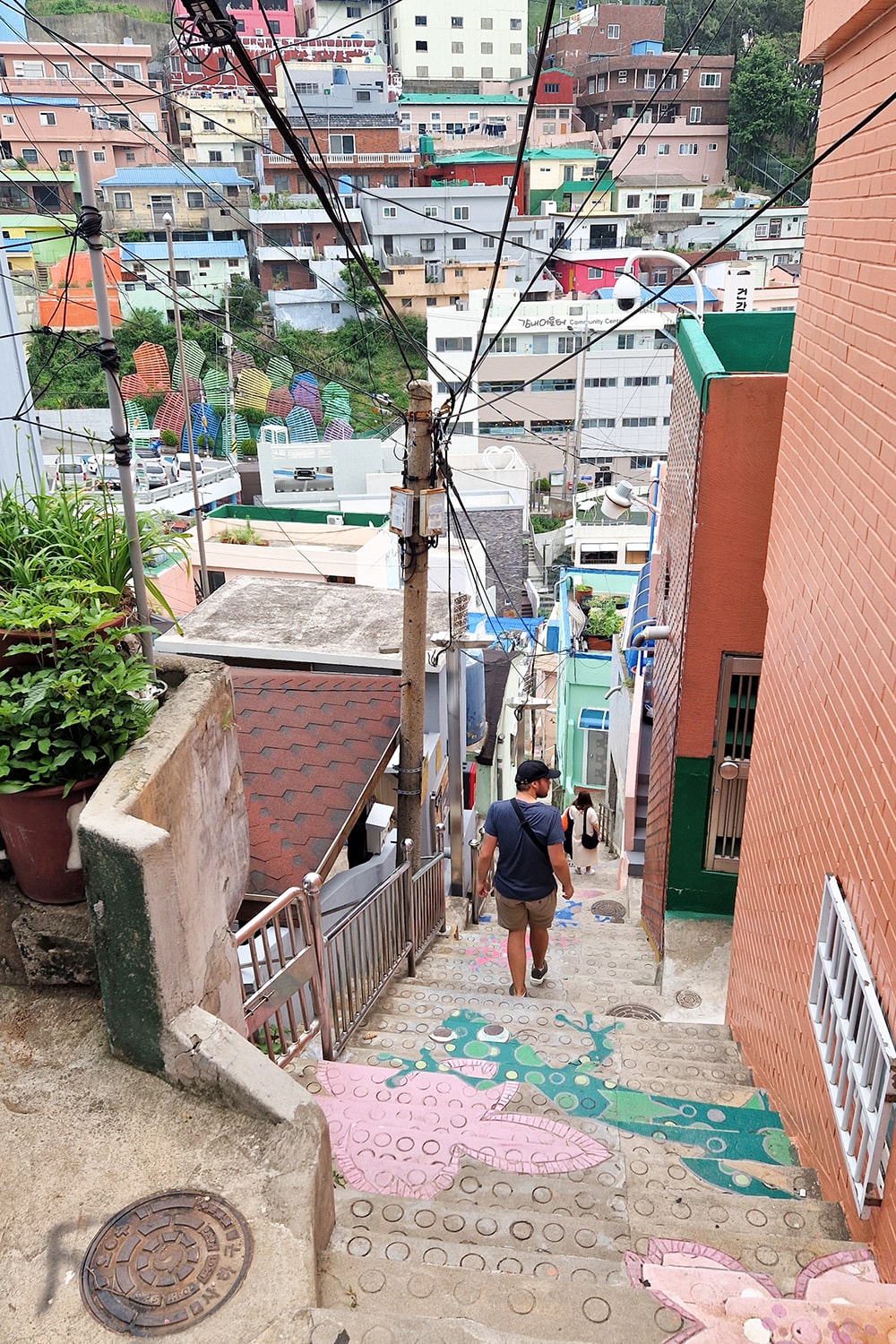
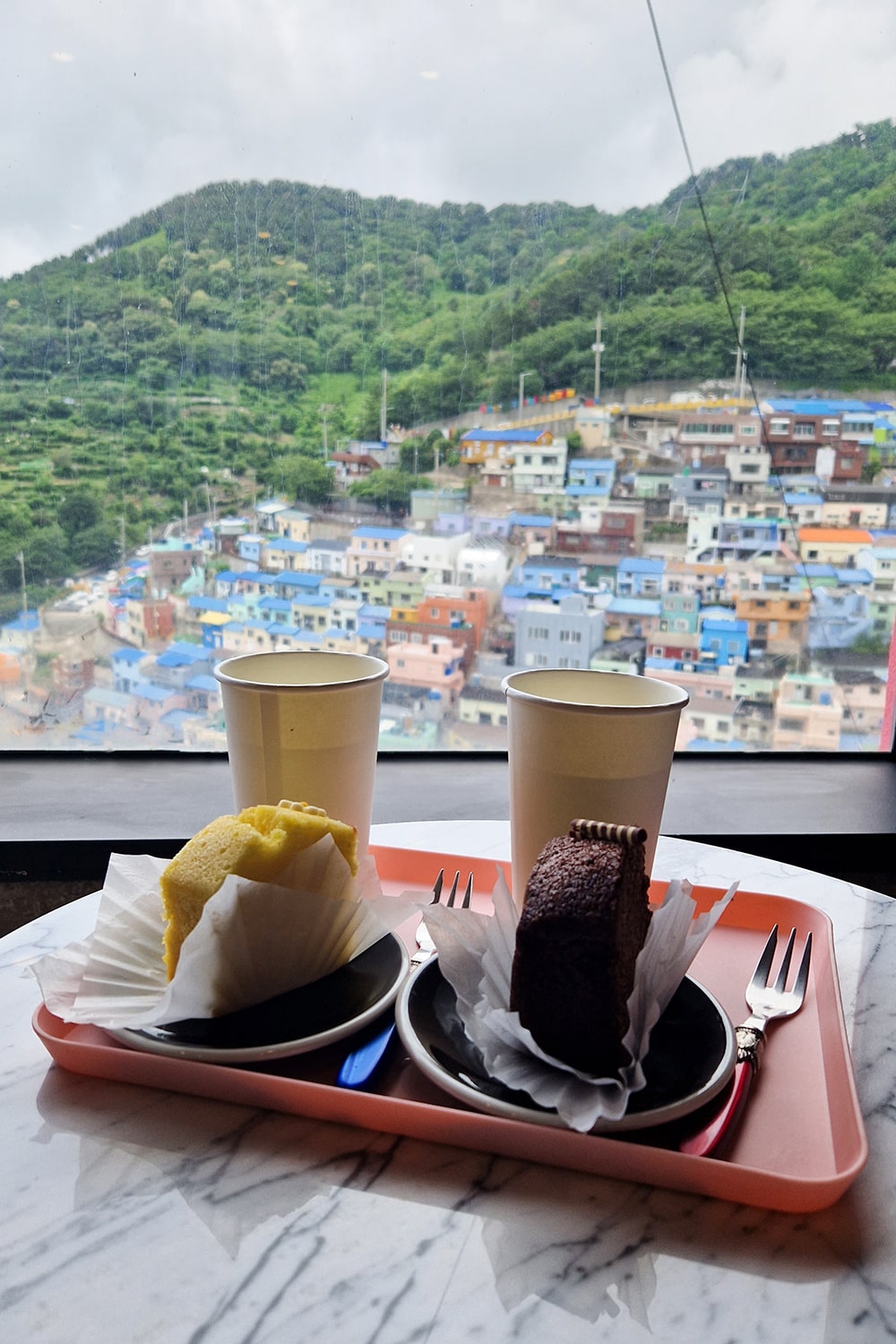
Getting to Gamcheon Cultural Village: Take the Subway Line 1 to Jagalchi station and then Exit 1. From here walk down the street towards Chungmu Market bus stop and catch one of the Seogu 2 buses. Ride until Gamcheon Village bus stop.
Head back down the mountain into Nampo-dong/ Jung-gu area for lunch. You should eat something filling because this afternoon might require a bit more physical strength!
Walk the picturesque Igidae Coastal Walk!
The Igidae Coastal Walk was definitely one of our highlights in Busan! This stunning walk winds its way alongside the most breathtaking coastal stretch!
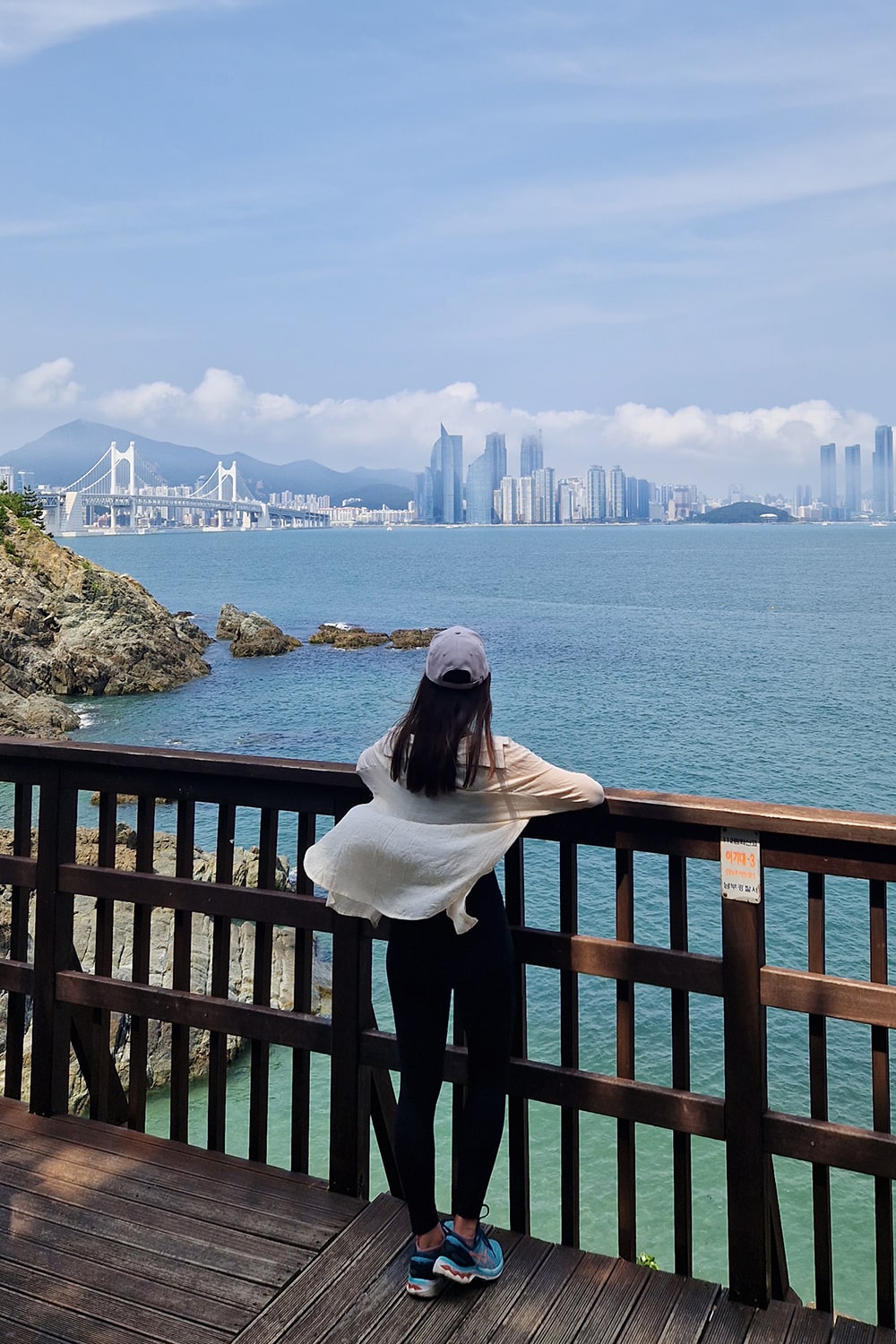
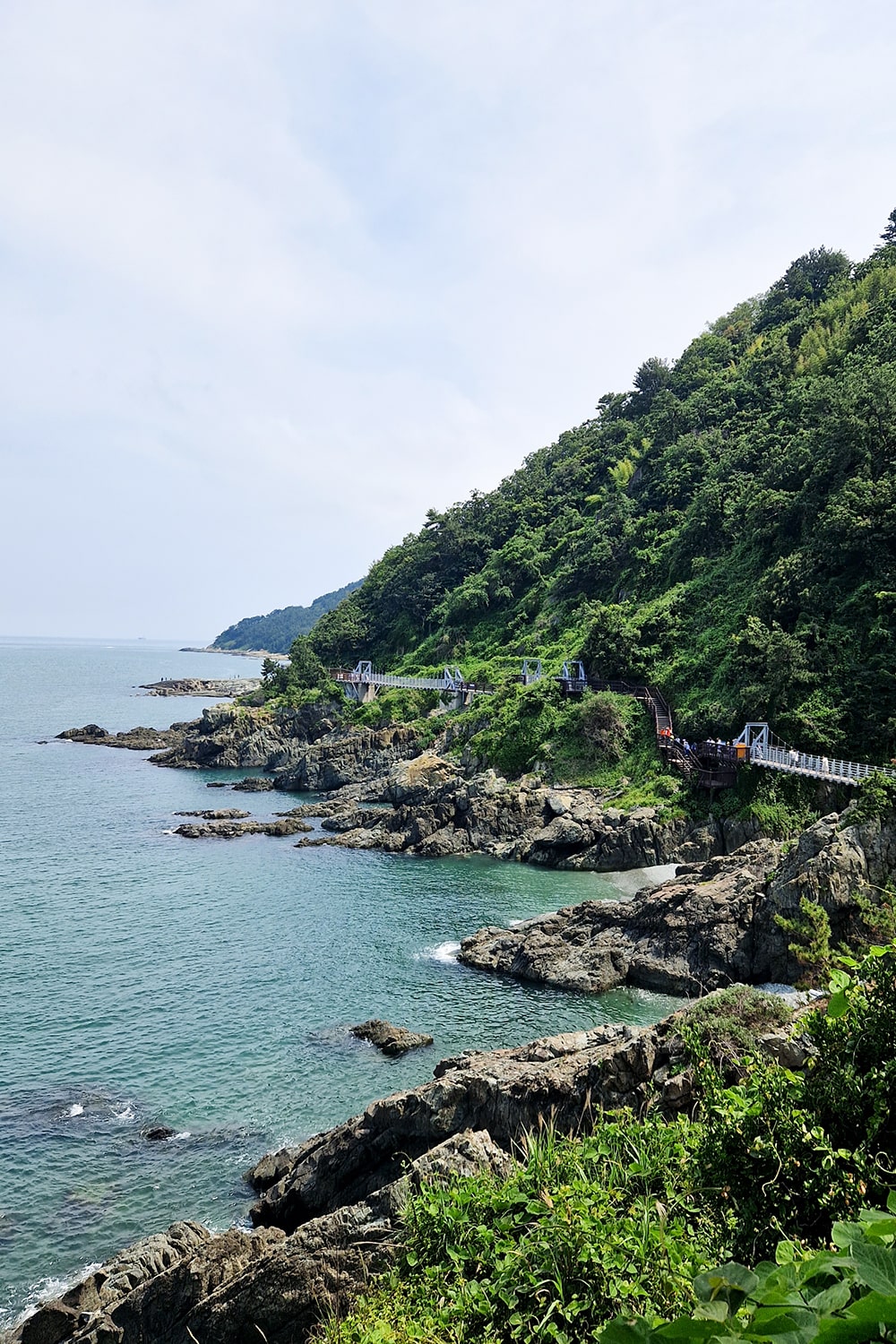
You get the most awesome views of the Busan city skyline as well as beautiful nature shots the further down the coast you get. Contrary to the Busan Green Railway we suggested walking in Haeundae on day two, the Igidae Coastal Walk is definitely a hike, especially the last stretch. It ends at the Oryukdo Skywalk, a glass observatory that is free of charge!
Depending on your fondness of hiking you have the following two options: Either you hike the whole Igidae Coastal Walk, which is a 4.7 kilometers hike and will take you approximately 2-3 hours, OR you do an abbreviated version of it.
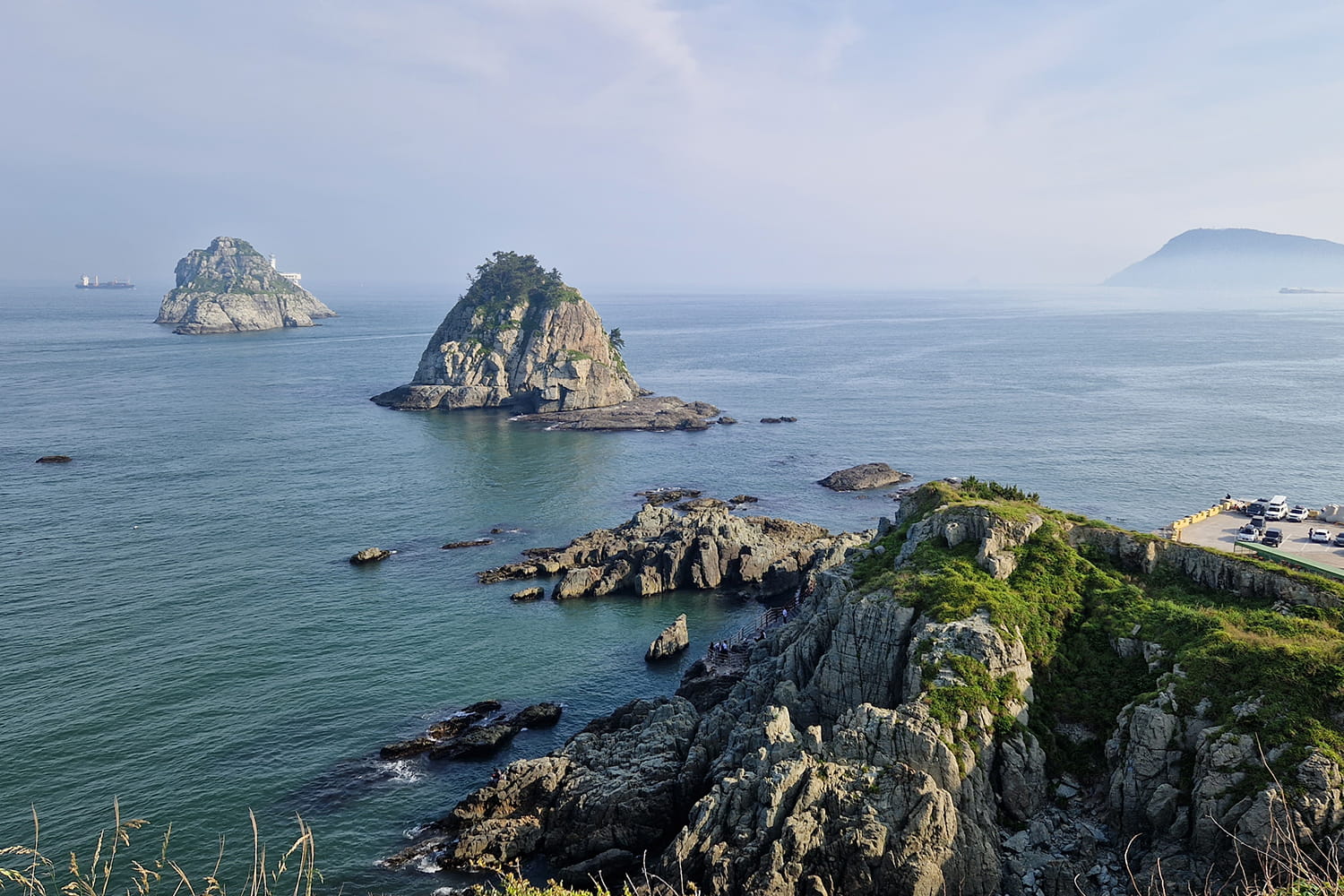
If you are not that much into hiking, we do suggest at least walking the first few hundred meters of the Igidae Coastal Walk. The views are simply too good to miss out on! If you wish to visit Oryukdo Skywalk without hiking there, you can get there by local bus as well!
Depending on whether you are hiking the whole Igidae Coastal walk or not, you will have more or less time left in the afternoon to explore other areas of Busan. Down below you can find a few suggestions that are worthwhile if you have the time to visit them!
Things to do near Gwangalli Beach
🏯 Okryeonseonwon Temple. A lovely Buddhist temple located on a hill near Gwangalli Beach. 🛍️ Shinsegae Centrum City. In case you did not get time to visit the largest department store in the world on day 2, today is your chance to make up for that. ⛵ Milak Breakwater. Take a walk alongside Milak Breakwater for great views of Gwangan Bridge. 🍨 Bingsu. Try the famous Korean dessert called 'Bingsu'. It is essentially shaved ice served with a number of different toppings of your choice! You can find Bingsu near Gwangalli Beach at 'Sulbing' or 'Hong Ok Dang'.
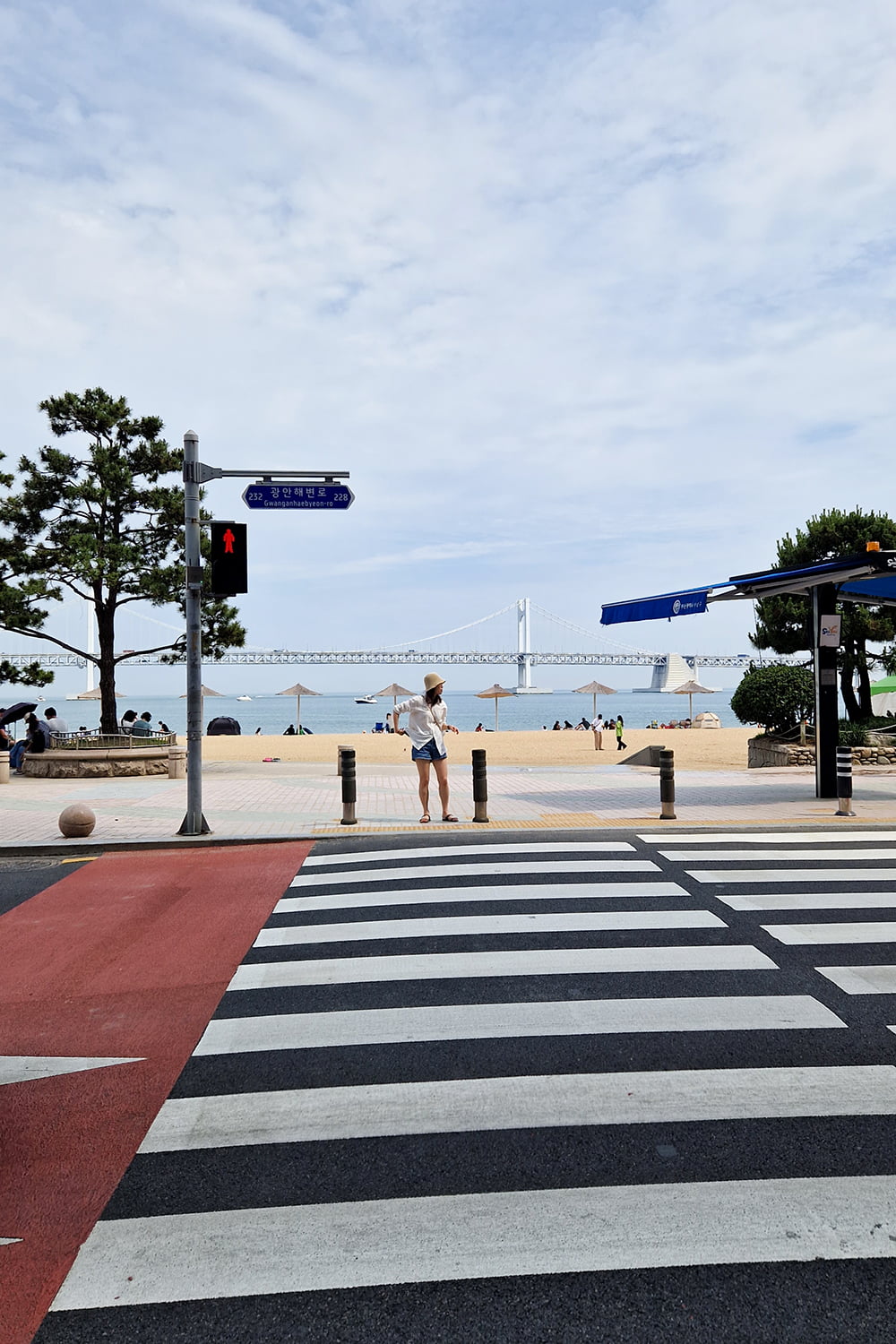
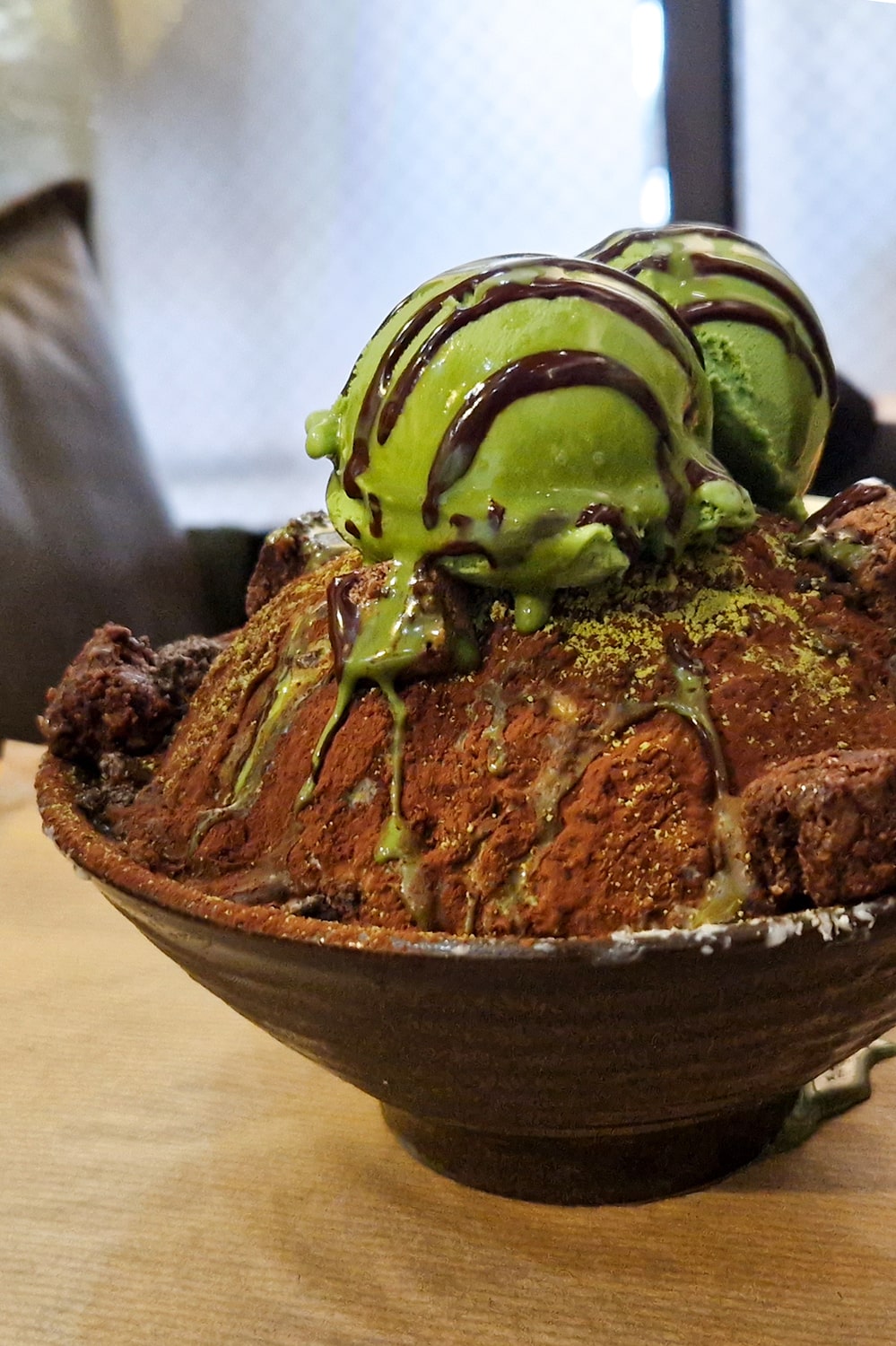
No matter how you spend your afternoon, head to Gwangalli Beach area in the evening. This area is known for being a great place to spend your evenings, especially if you are into nightlife!
Surrounding Gwangalli Beach you can find numerous bars, restaurants from Korean BBQ to pubs serving Korean Fried Chicken with beer, karaoke bars and so on! During weekends this area can become quite packed.
The views from Gwangalli Beach on to Gwangan Bridge are quite awesome as well, during the day as well as at night. On Saturday nights there is a small drone show you can watch from the beach!
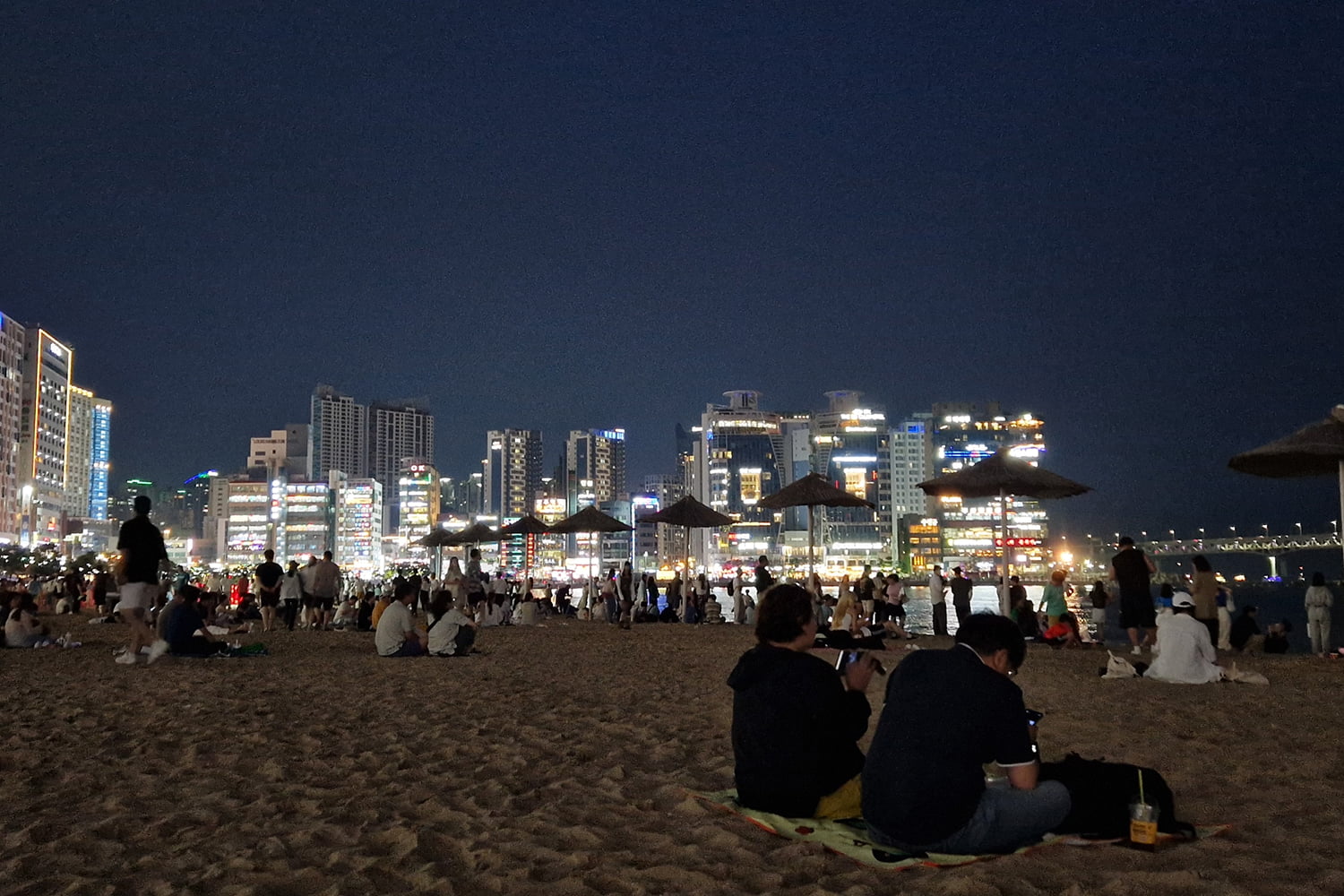
Day 4: Haedong Yonggungsa Temple, Seomyoen Area and Departure
We did save one major highlight of Busan for your last day in the city:
Visit Haedong Yonggungsa Temple
The latter is South Korea’s most beautiful temple! We think it this is a self-proclaimed title, we could be wrong though.
No matter what the case, this temple is truly one of the most stunning ones we encountered in South Korea so far! It is located on a rocky coastal stretch, overlooking the beautiful blue sea. And that breathtaking location alone gives Haedong Yonggungsa Temple quite a big head start on other temples for sure!
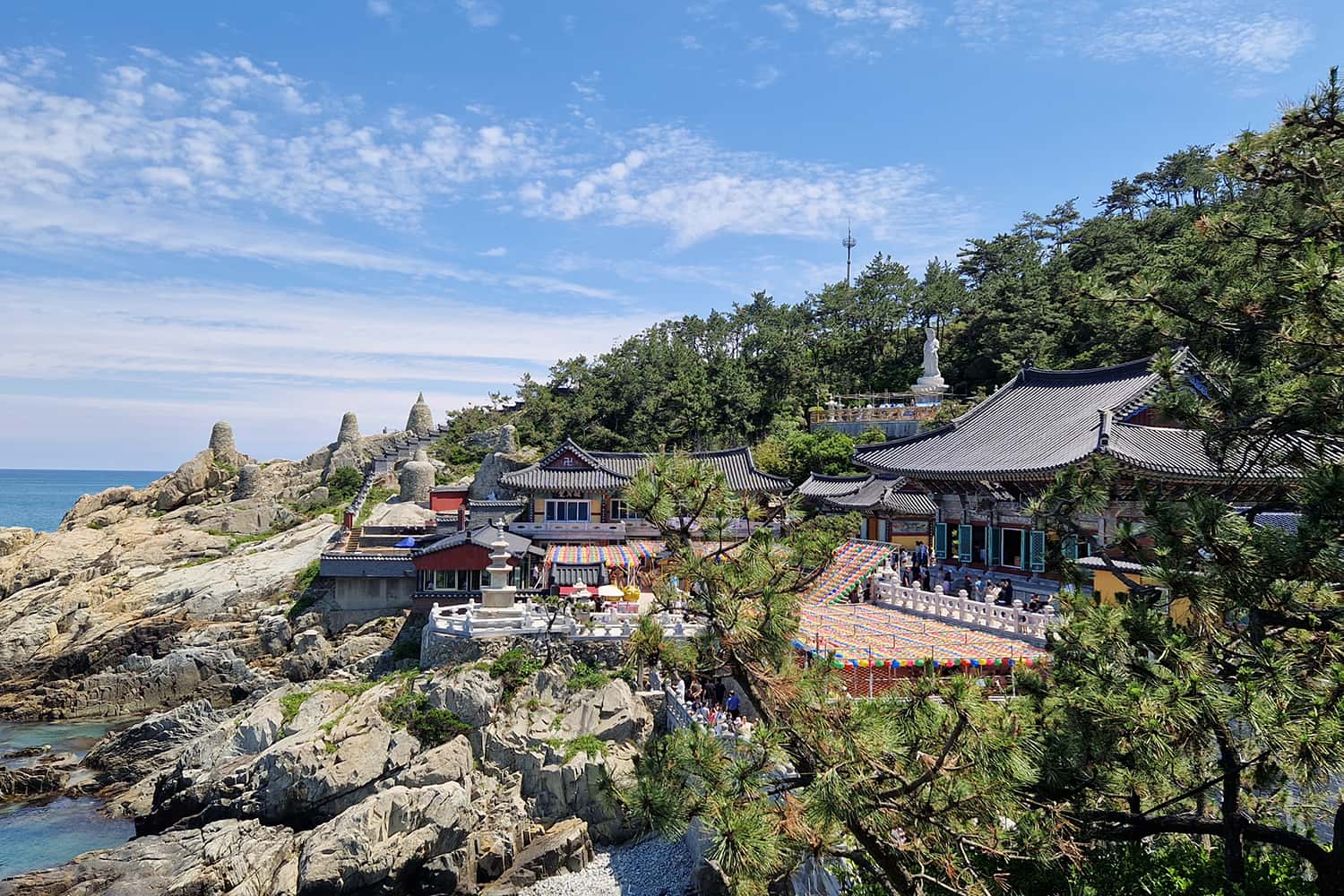
The temple is located quite a bit further outside of Busan. And it is super popular as well, so getting there early is a great idea. Entrance is free!
How to get to Haedong Yonggungsa Temple? Take the Subway Line 2 to Haeundae and then Exit 7, from here walk towards Haeundae Urban Railroad Station bus stop. Get on bus 1001, 181 or 100 and ride until 용궁사입구 (one bus stop after Dongbusan Toruist Complex). From here you will have to walk down Yonggung-gil for about 10 minutes. Haedong Yonggungsa Temple Complex starts at the end of the street!
Or you can call a taxi via Kakao Taxi if you prefer the latter!
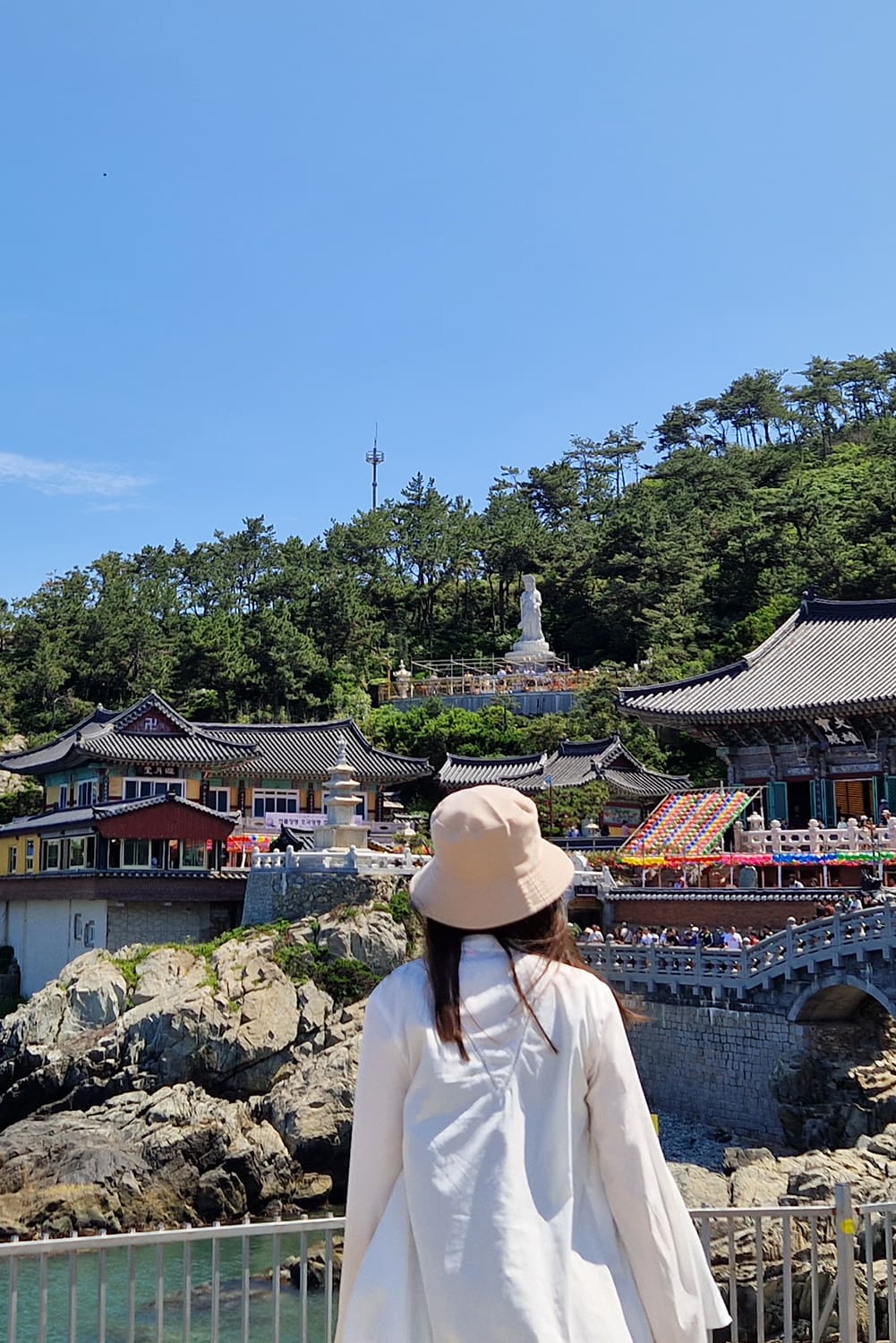
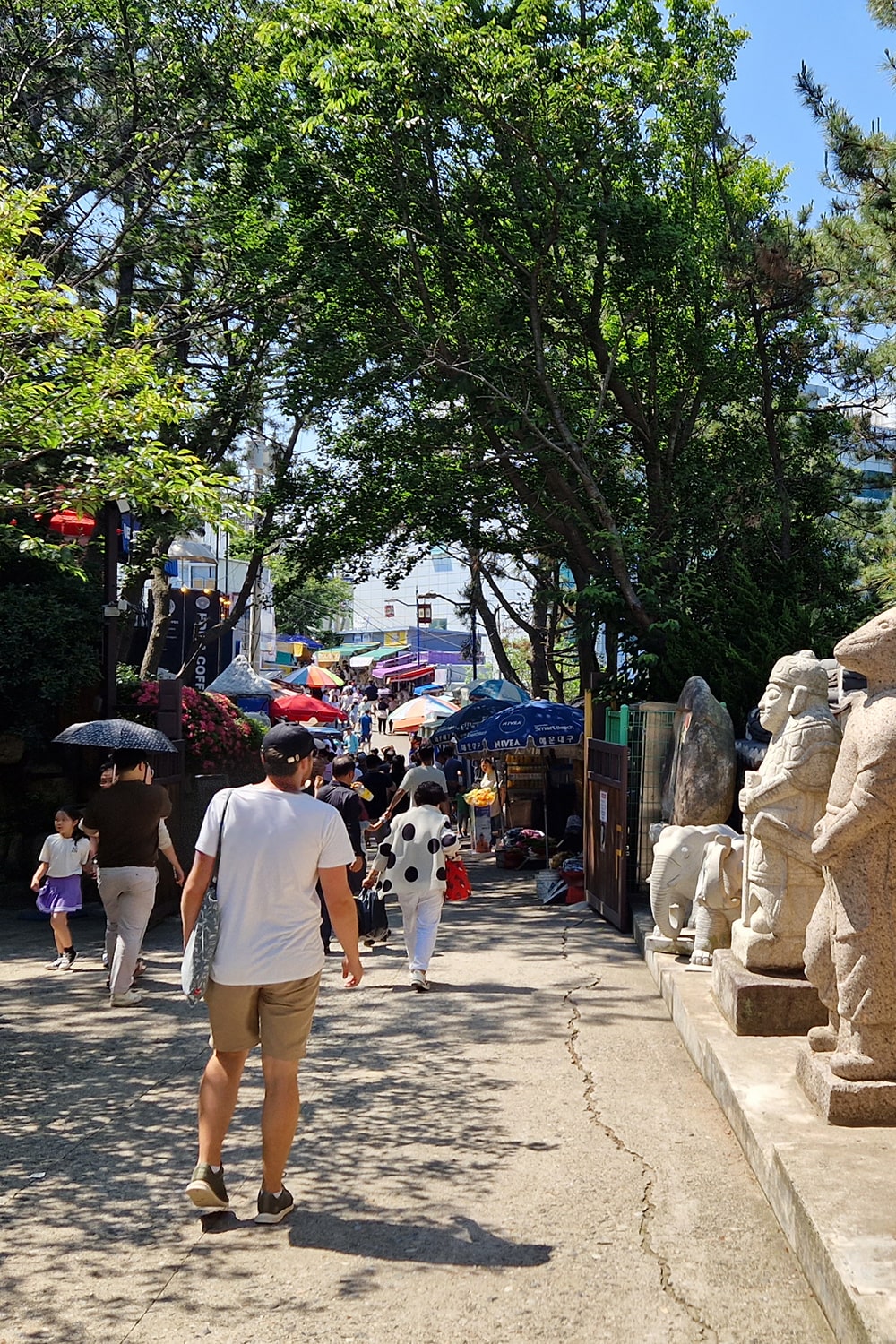
Head to Seomyeon Area for lunch
After your visit to Haedong Yonggungsa Temple make your way back into the city. If you have some time left, we will explore one more area in Busan: Seomyeon Area. The latter is Busan’s downtown area.
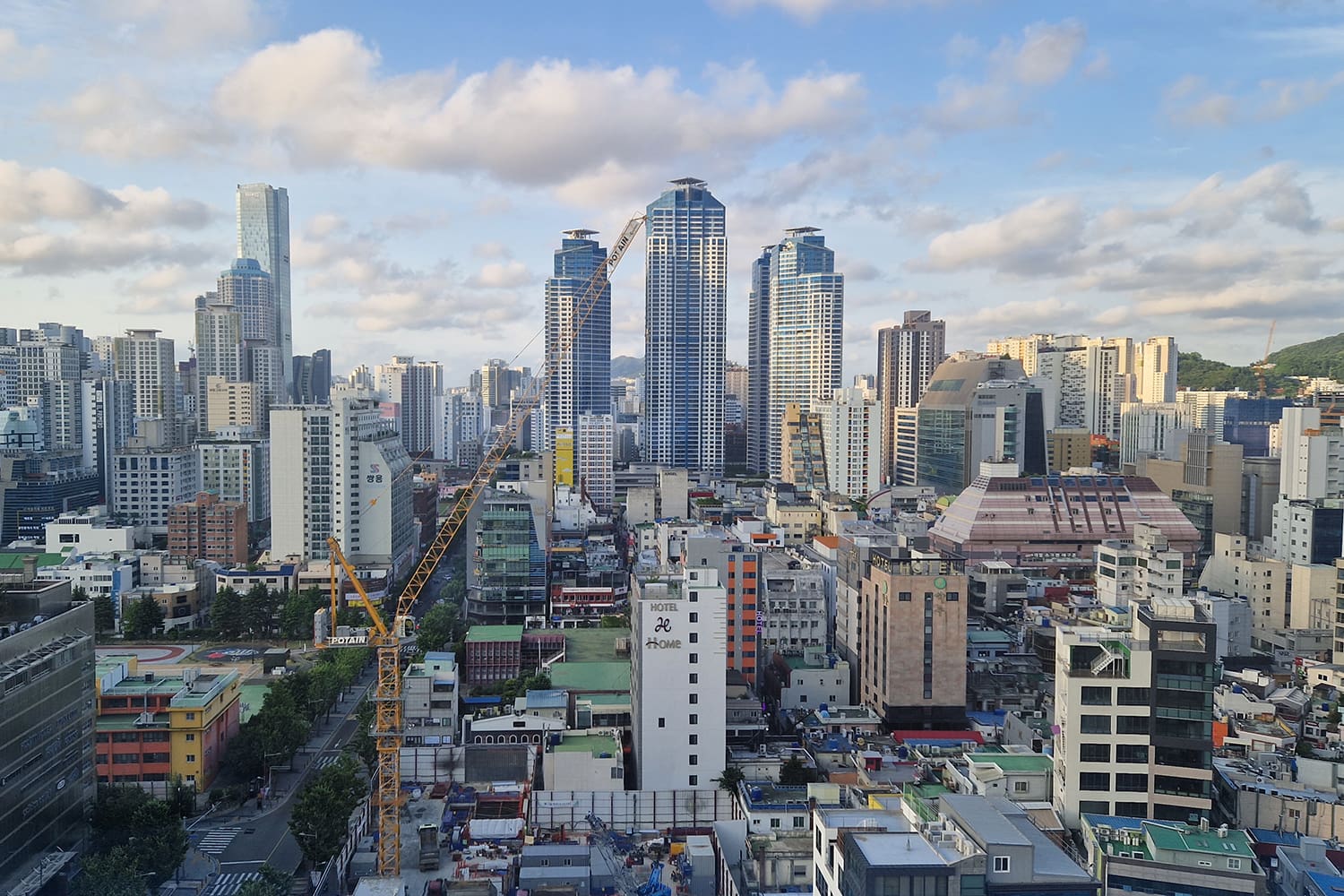
Here you can find numerous shops and restaurants. Seomyeon Station is quite famous for its underground shopping street filled with small shops selling mostly fashion.
As a tip: Head to 'Woojung Dolsot Bibimbap Seomyeon' (Address: 3 Dongcheon-ro 85beon-gil, Busanjin-gu, Busan, South Korea or 5346+FR Busan, South Korea on Google Maps) for a delicious and quite inexpensive bibimbap!
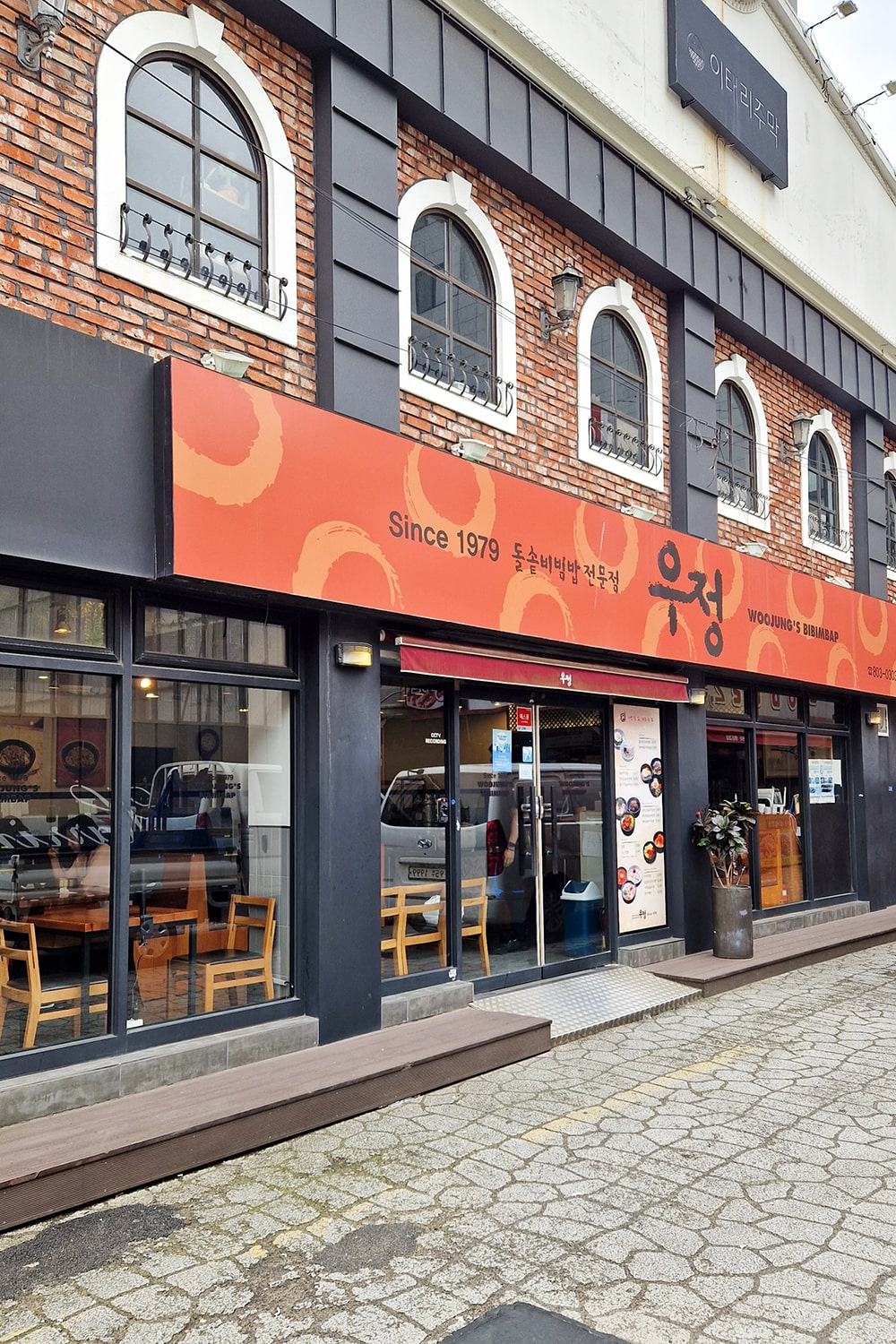
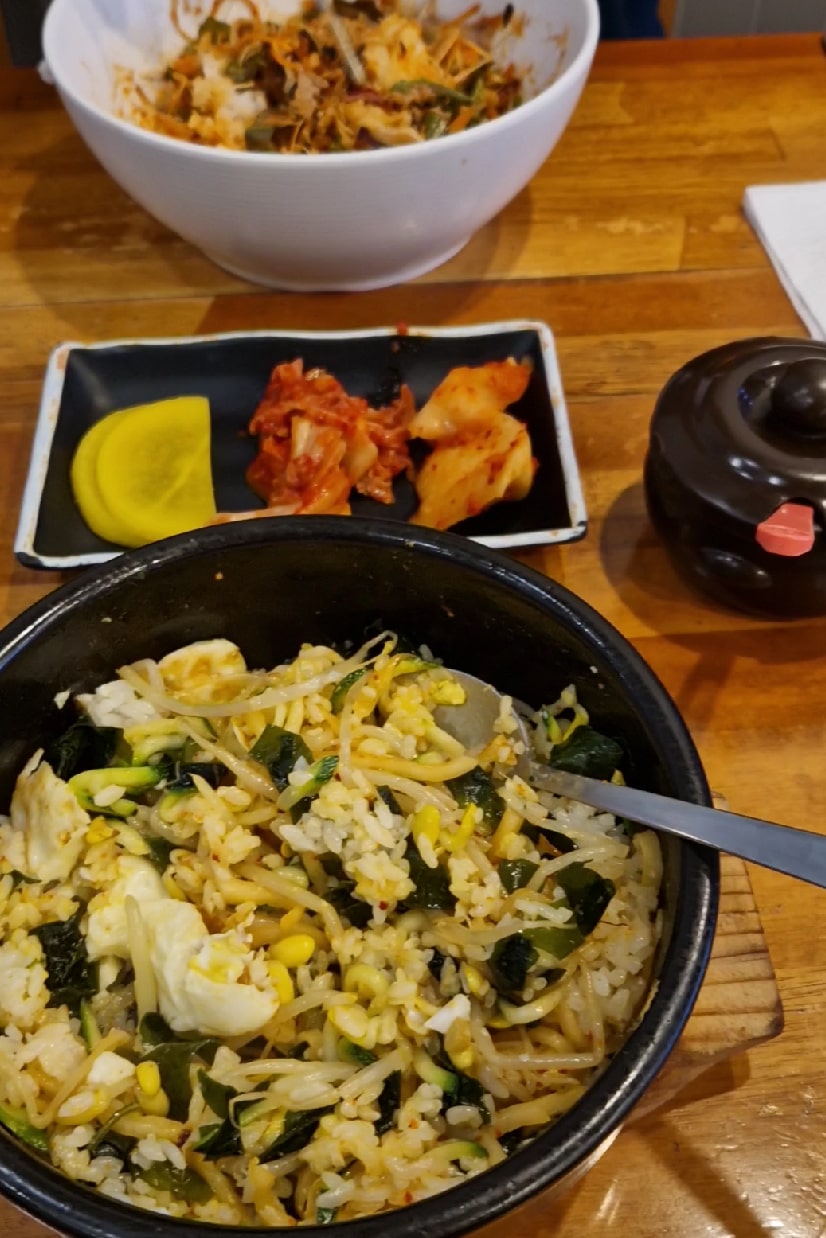
And just like that we reached the end of our ultimate 3-4 days in Busan Itinerary! It is now time to either head to your next destination or spend the afternoon revisiting your favorite area of Busan, make up for something you did not manage to visit or maybe explore an area you have not been to yet!
Before you go though, two important questions remain which we would like to answer first.
Where to stay in Busan?
Busan is South Korea’s second largest city and traveling from one end to the other can easily take up more than 45 minutes. The city has a number of interesting neighborhoods that can all be considered city centers in their own way.
Choosing the right neighborhood to stay in, based on your interests and preferences, can absolutely make or break your trip. That is why we wrote a separate post: Where to stay in Busan? – Best Hotels & Neighborhoods. There we break down the most popular areas to stay in for tourists and tell you exactly why you should stay where!

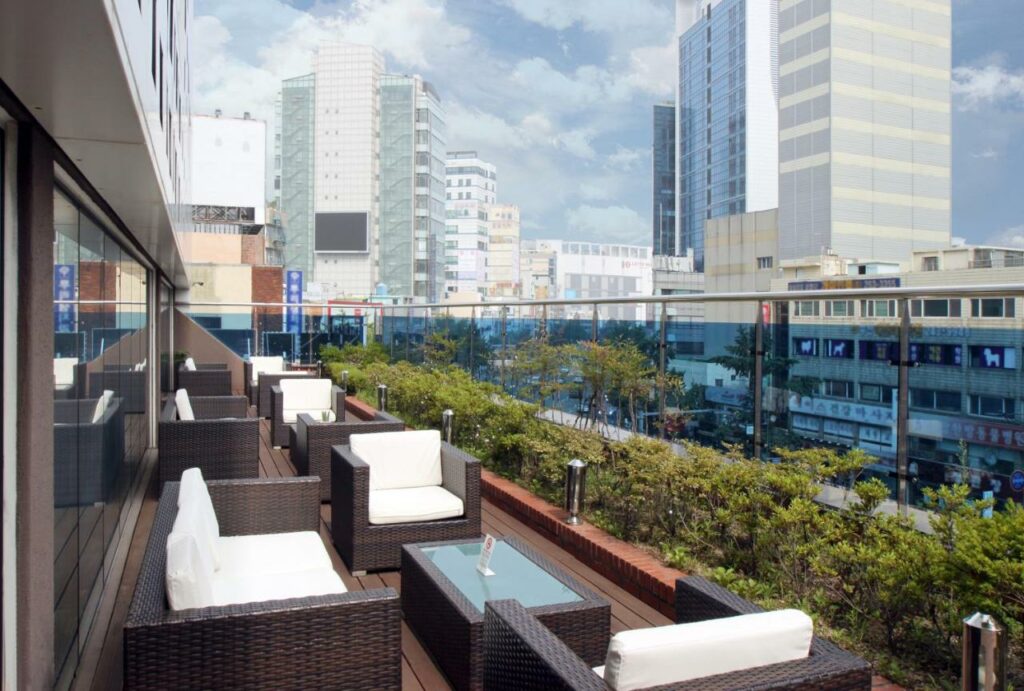
For this particular itinerary, our personal recommendation would be to stay in Nampo-dong / Jung-gu area as it is in our opinion the best starting point for sightseeing Busan.
Hotel recommendations in Nampo-dong/Jung-gu:
📌 K-GUESTHOUSE Premium Nampo* Located right next to Nampo Station, this guesthouse is a great choice for anyone traveling Busan on a budget! Price ~30€/night.
📌 Hotel Foret Premier Nampo* While the hotel has quite some years under its belt, it still is a people favorite not least due to its super convenient location next to BIFF Square and Jagalchi Station. Price ~50-60€/night.
📌 Stanford Hotel Busan* Located right across the street from BIFF Square, this hotel has the most ideal location for exploring all the highlights of Nampo area on foot!
Price ~50-60€/night. Reviews: 8.9 on Agoda.
However, other areas might be more to your taste or suited for your interests. That is why, in the end, make sure to choose a neighborhood in Busan that best works for you!
The ‘Visit Busan Pass‘. How does it work? And is it worth it?
We mentioned the ‘Visit Busan Pass’ quite a number of times in this post. That’s why we want to elaborate a little more on how it works and who could be interested in it.
Essentially the ‘Visit Busan Pass’ is a sightseeing pass that includes a number of different attractions in and around Busan. They are divided into Group A & B and theoretically you can visit all of them without additional costs depending on the pass you choose.
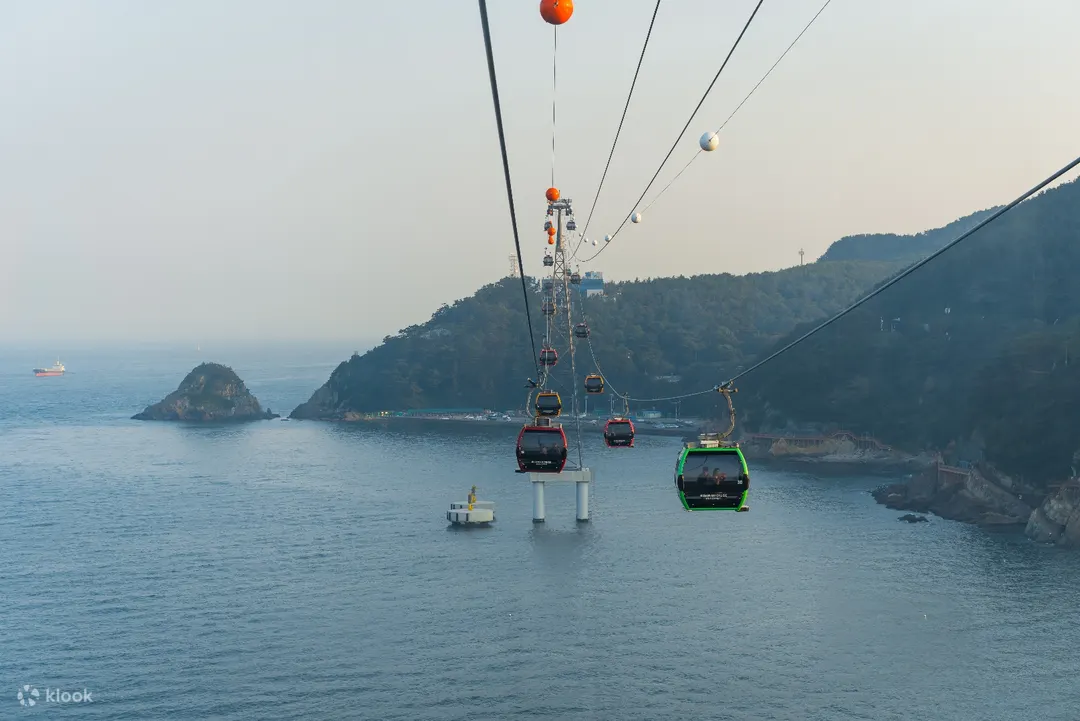
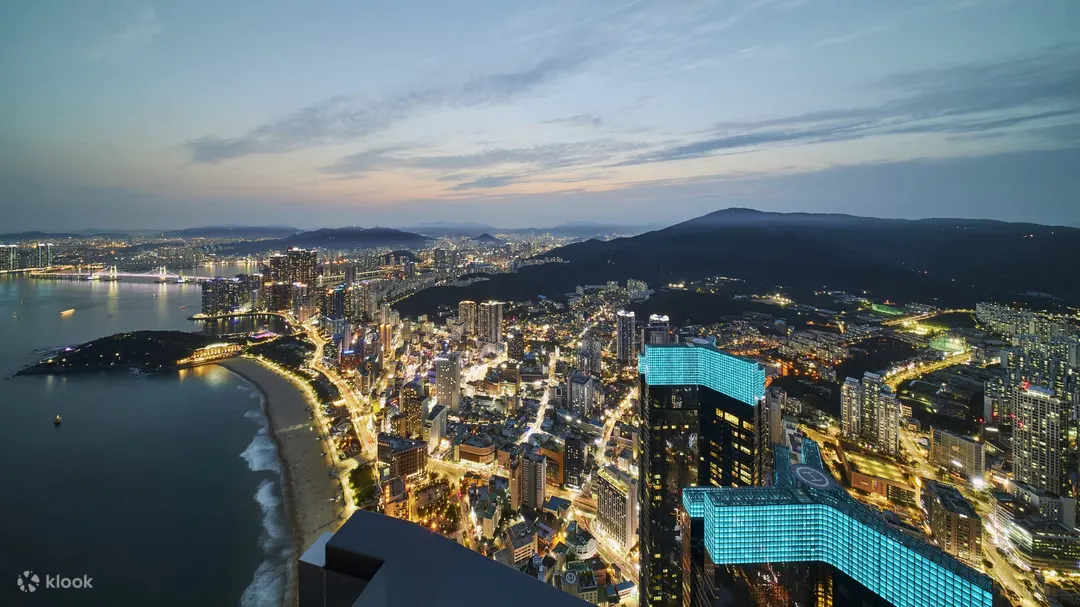
Of course you probably do not have the time to do all of them. And you might not even be interested in all of them. So it is actually more of a question of finding out whether or not you can/wish to see enough of the included attractions in order to actually save money by buying it.
The ‘Visit Busan Pass’ has various different tiers
🌟24 Hour Pass: 55.000KRW. All attractions (Group A&B) included. Valid for 24h after initial use. 🌟48 Hour Pass: 85.000KRW. All attractions (Group A&B) included. Valid for 48h after initial use. 🌟Big 3: 45.000KRW. Select 3 attractions (1 from Group A & 2 from Group B). Valid for 180 days after initial use. 🌟Big 5: 65.000KRW. Select 5 attractions (2 from Group A & 3 from Group B). Valid for 180 days after initial use.
For whom is the pass worth buying?
- If you are traveling South Korea on a strict budget, there is a high chance that you are not interested in visiting enough of the paid attractions for the pass to be worthwhile.
- However, if you are interested in a few of the pass attractions we mentioned throughout this post (e.g. Busan Tower, Shinsegae Spaland, Blueline Coastal Train, etc.), make a list of all the activities you are interested in and check if one of the ‘Visit Busan Pass’ tiers might save you some money in the end.
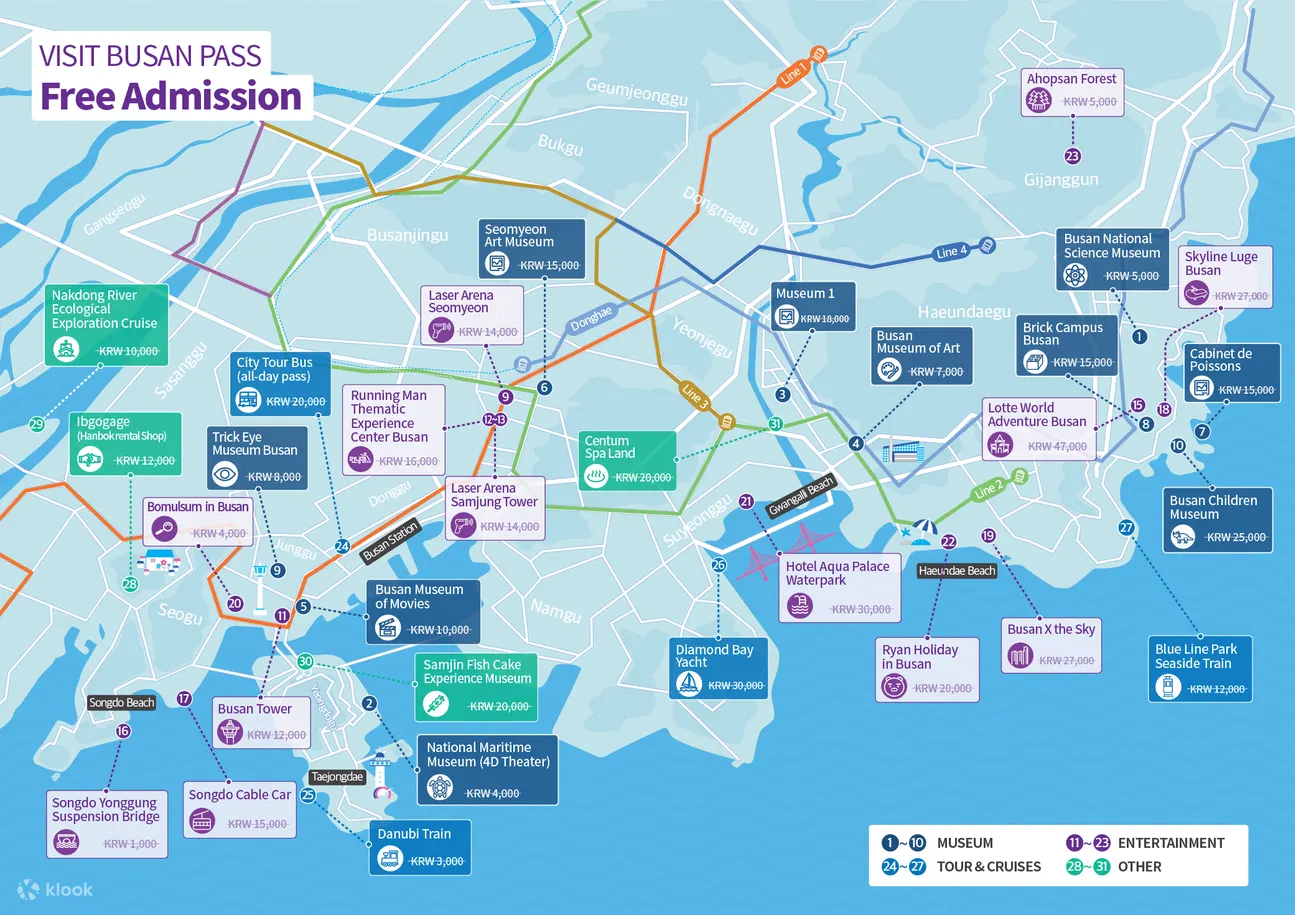
You can find a list of all the attractions included in the ‘Visit Busan Pass’ as well as more details on how it works on Klook. The latter is also where you can purchase the pass. Click the button below to get to the Klook website.
Note: We deliberately put all of the activities included in the pass on the first two days of the itinerary. That way it will be easier for you to use the pass if you chose a 24h or 48h pass.
Final thoughts on visiting Busan
So, that was a long one! But we hope that we were able to answer all the questions you might have when planning your trip to Busan. And if there are any left, don’t shy away from asking in the comments!
If this is your first time visiting Busan, you are in for a treat. Because this city is truly amazing and we hope that you will like it just as much as we did!
For more information on traveling South Korea in general or a very specific location within the country, check out our South Korea Travel Page. The latter is where you will find all our guides, travel tips and tricks specifically for Korea!
And that concludes our travel guide to the South Korean city of Busan! Happy travels!
